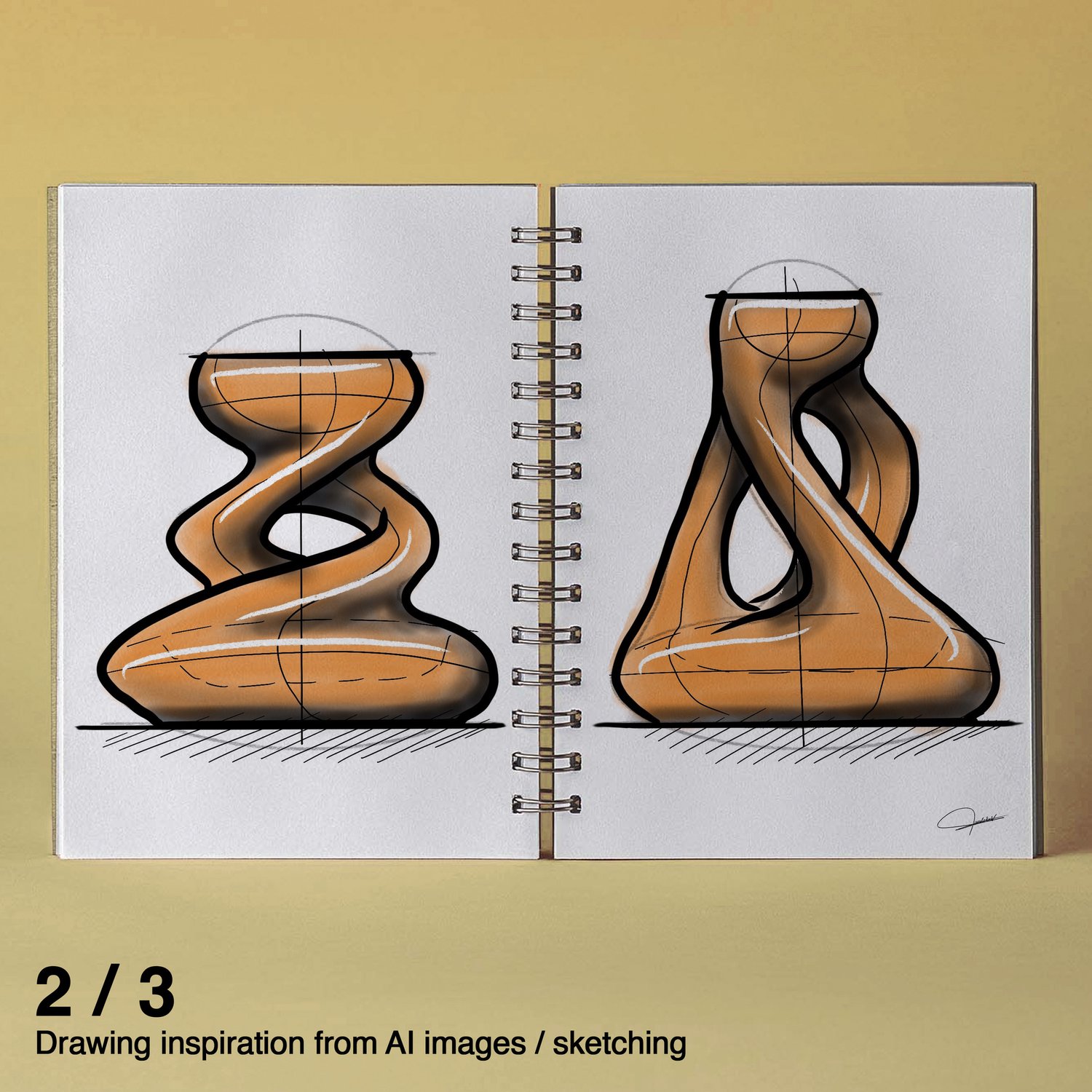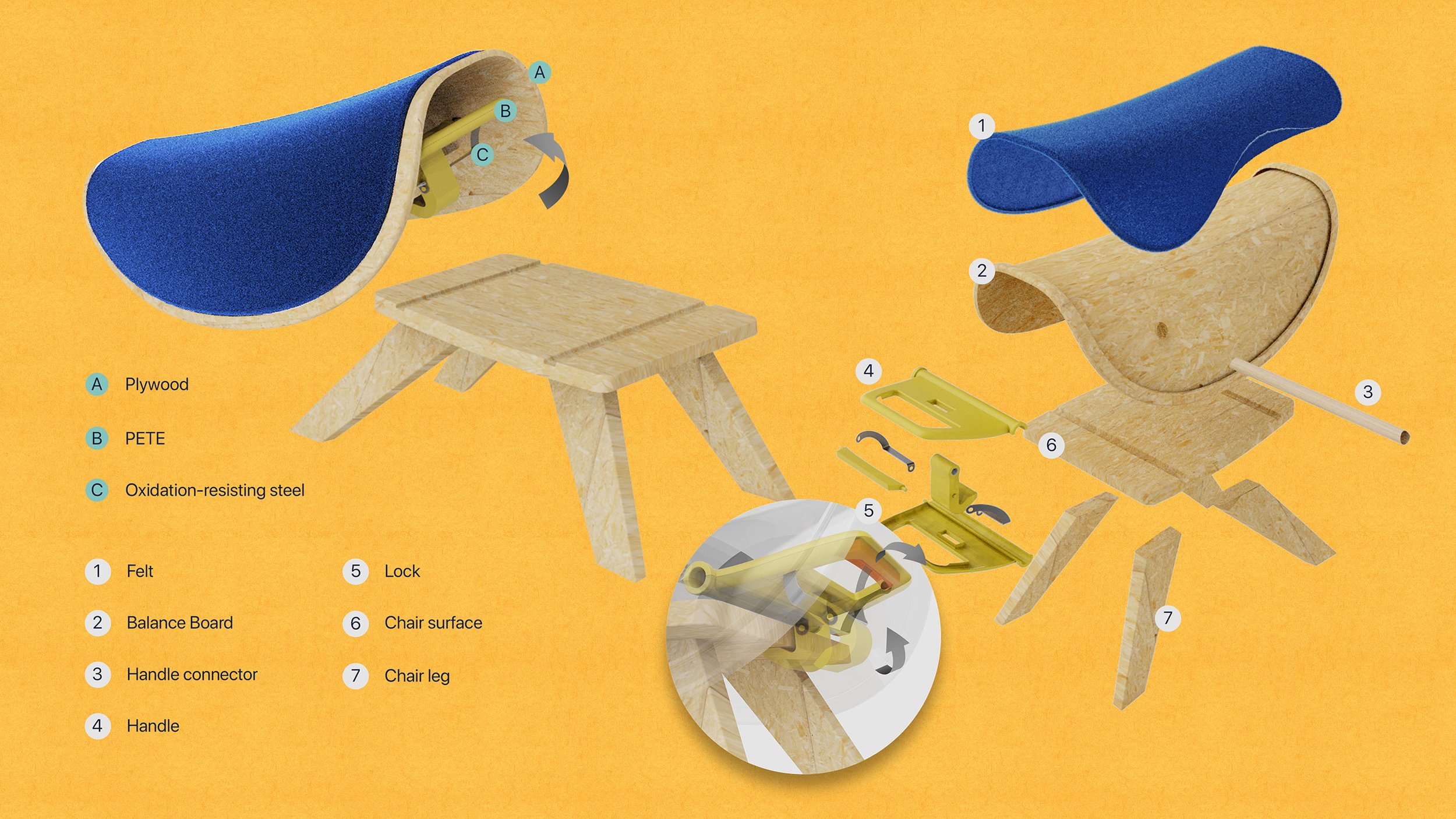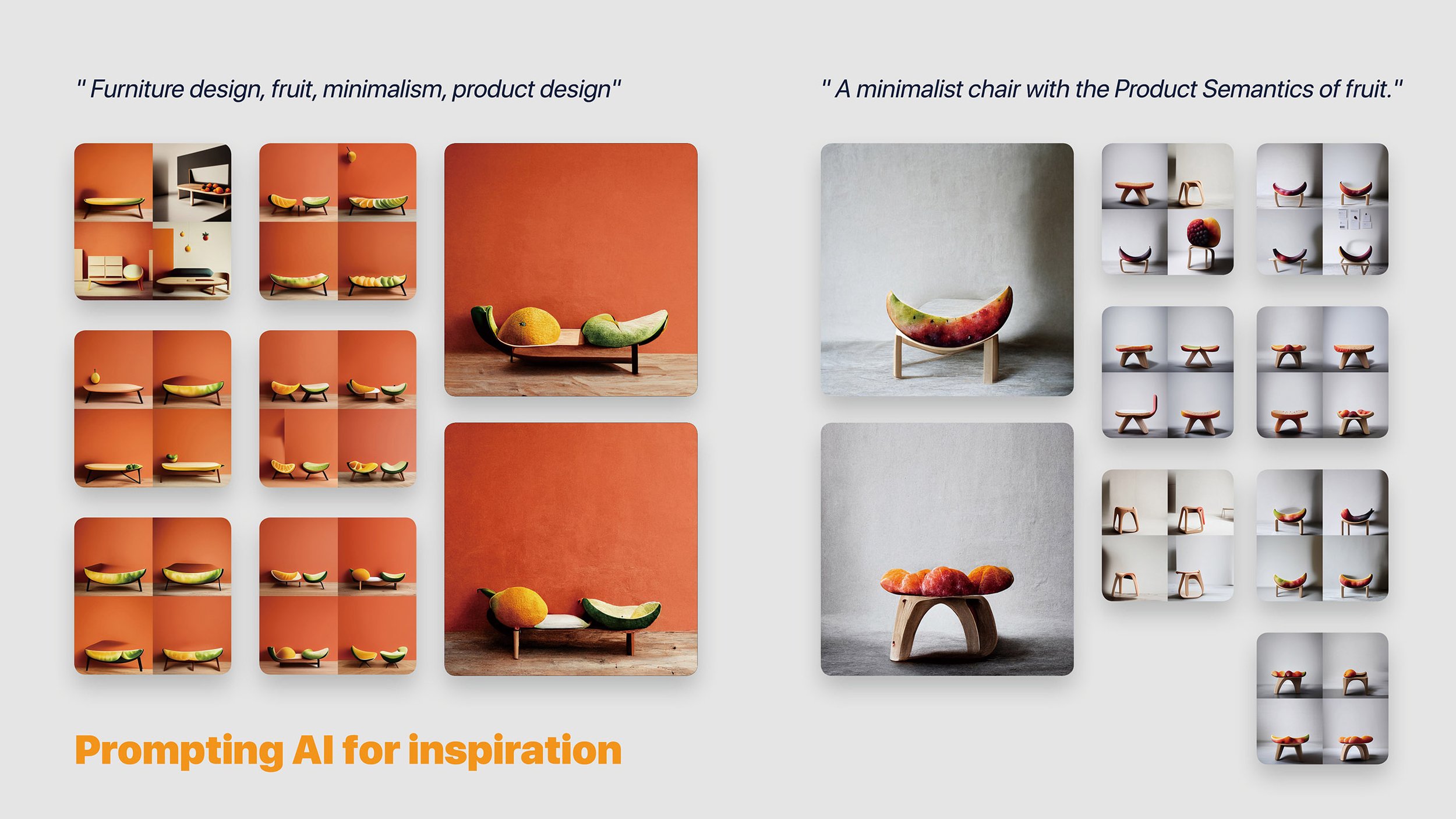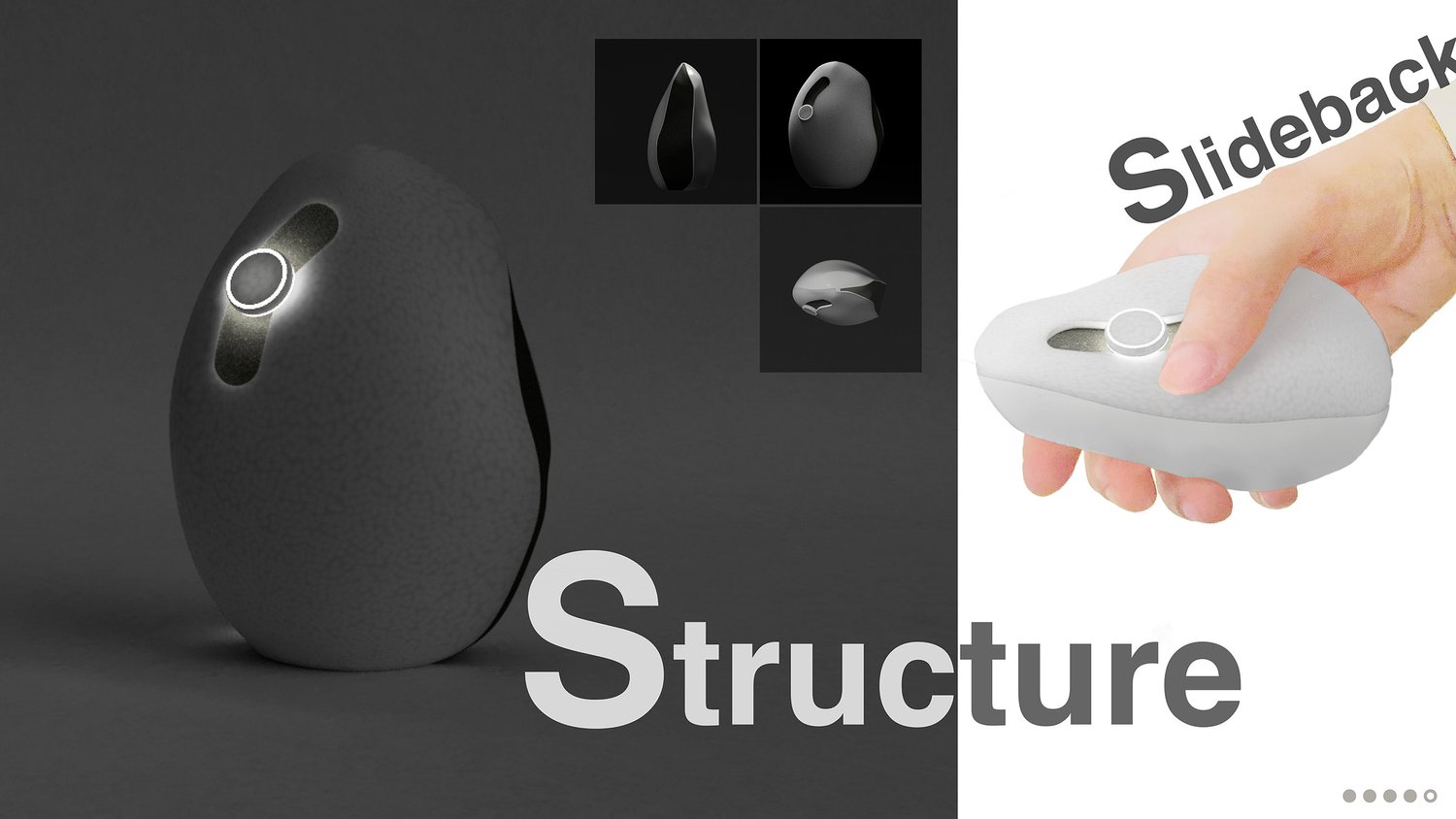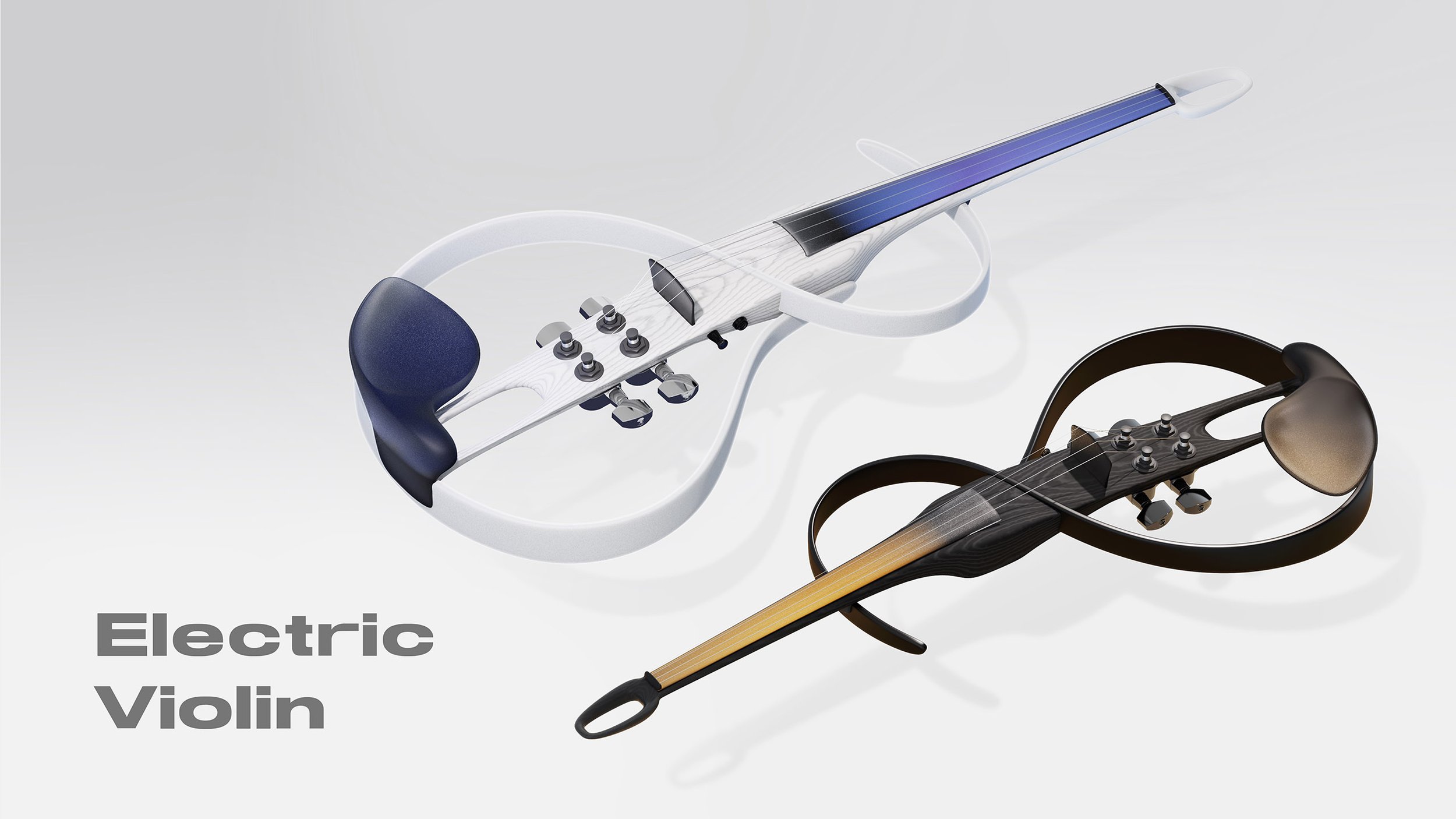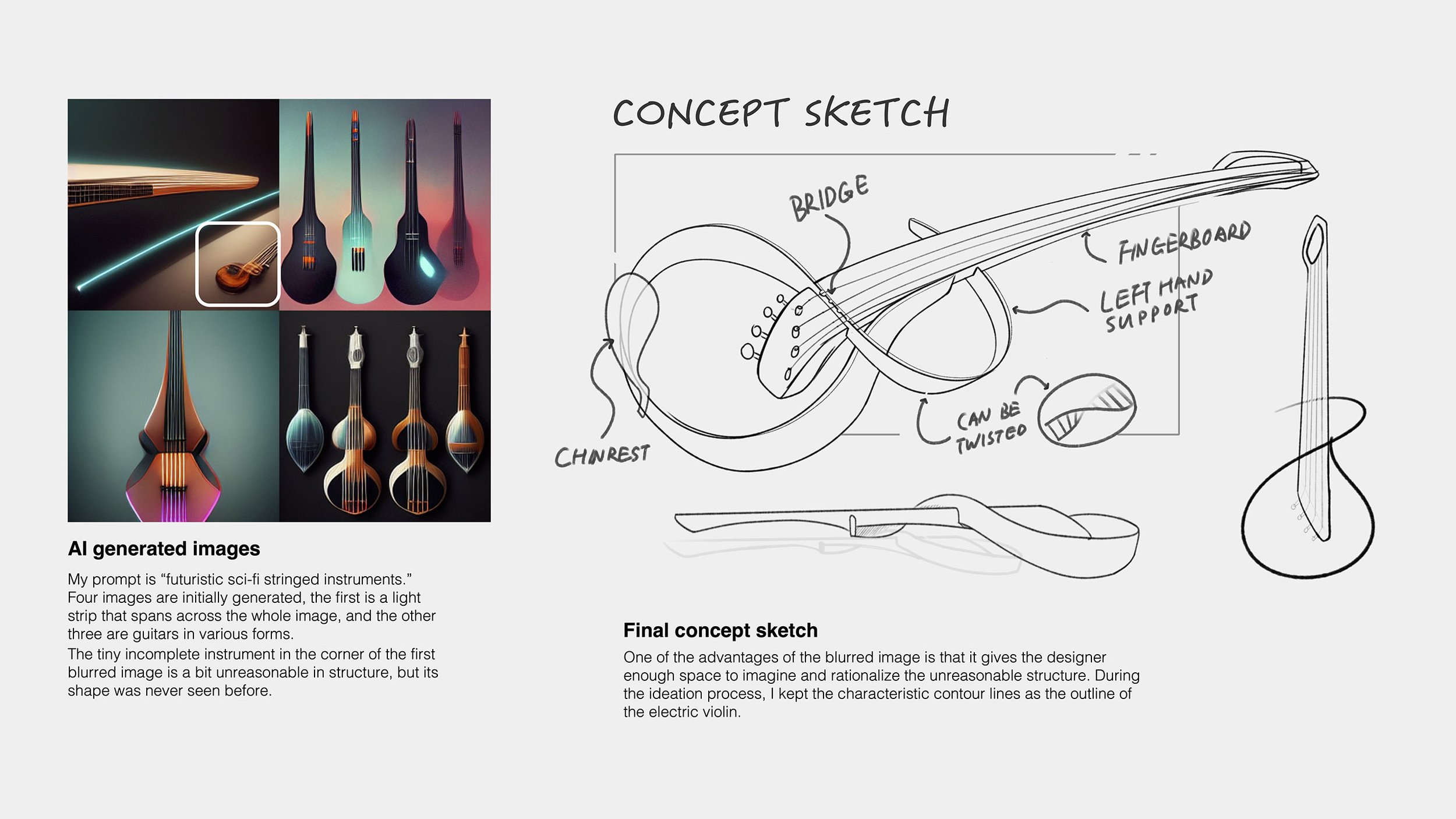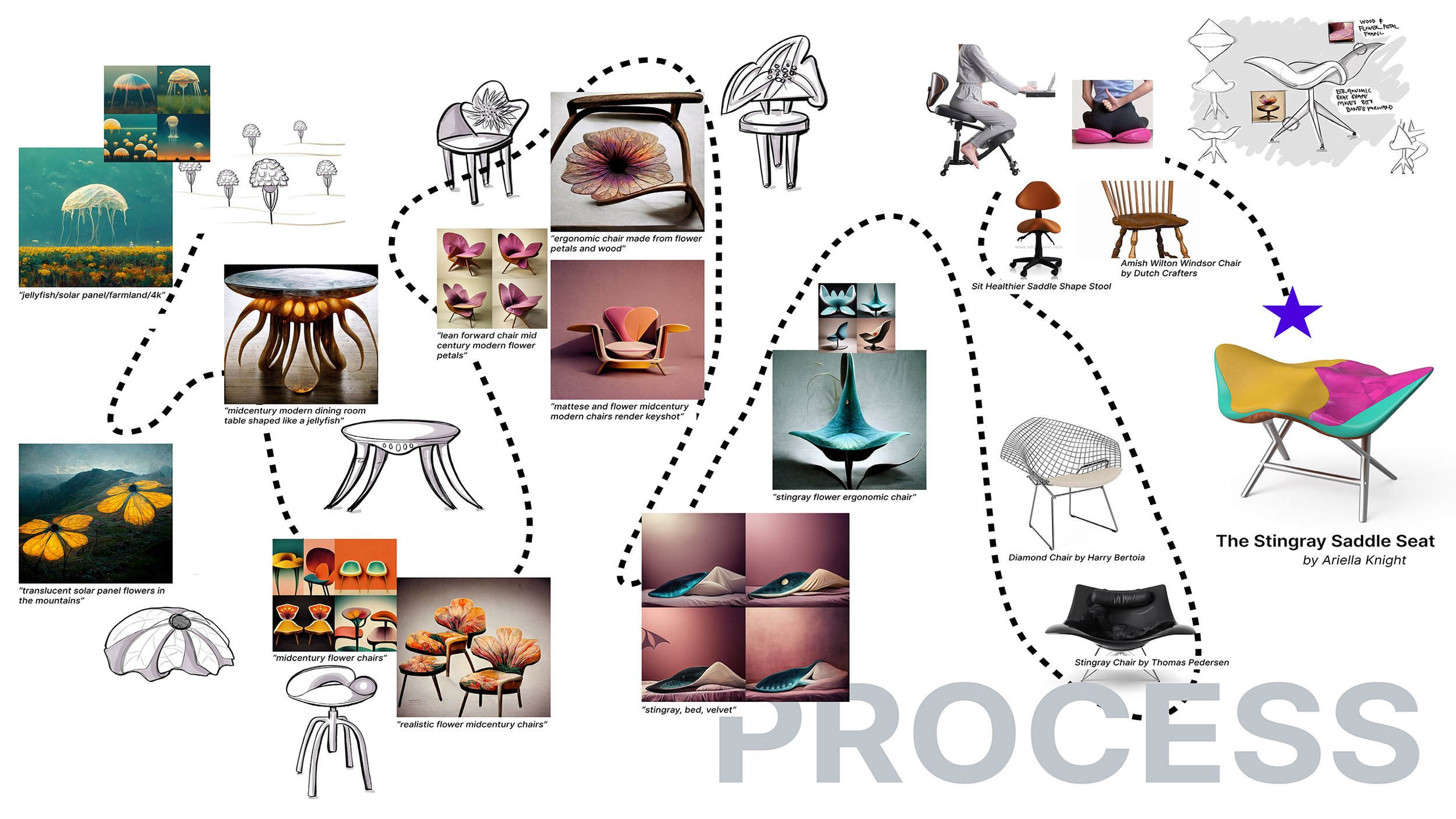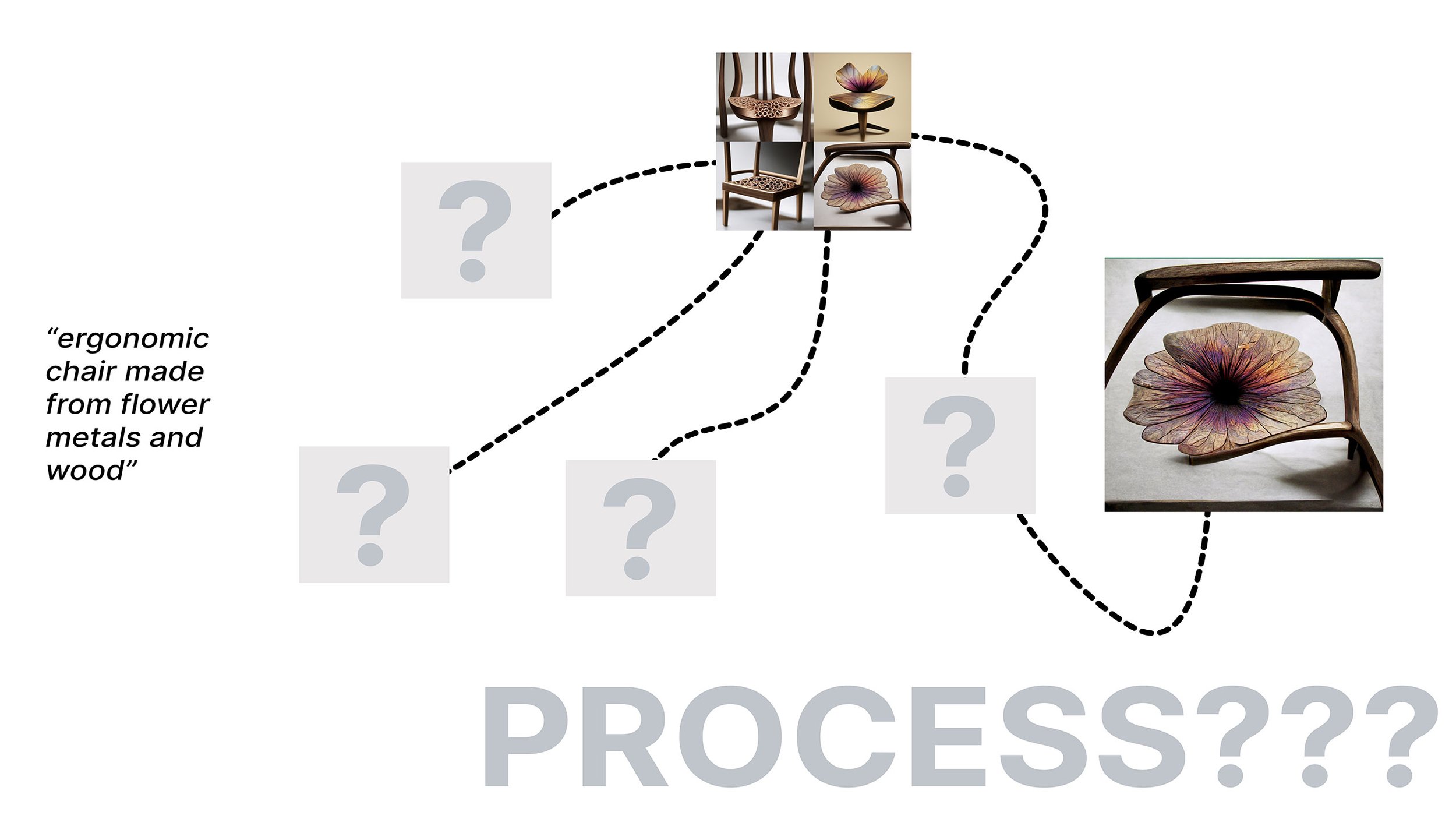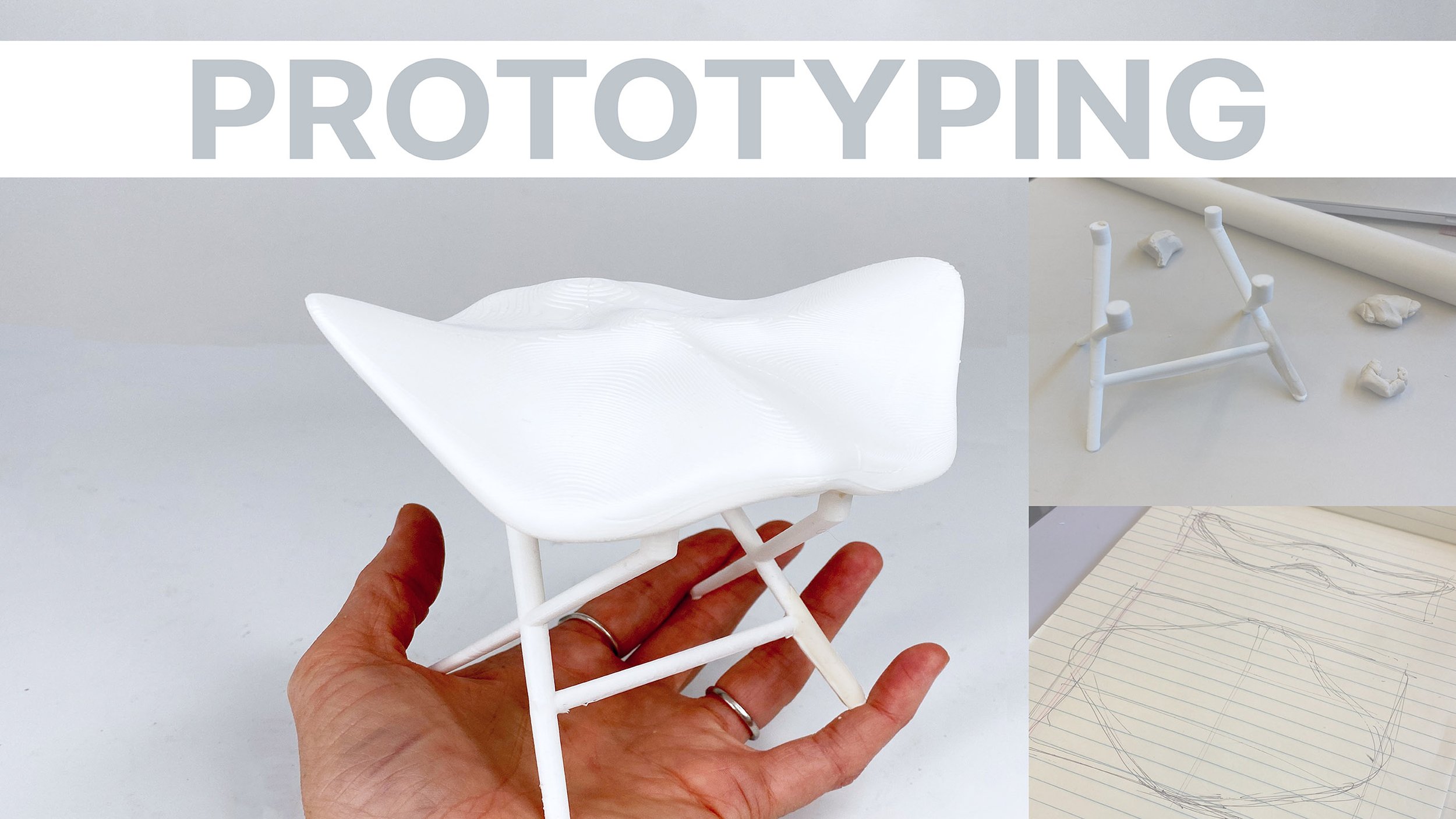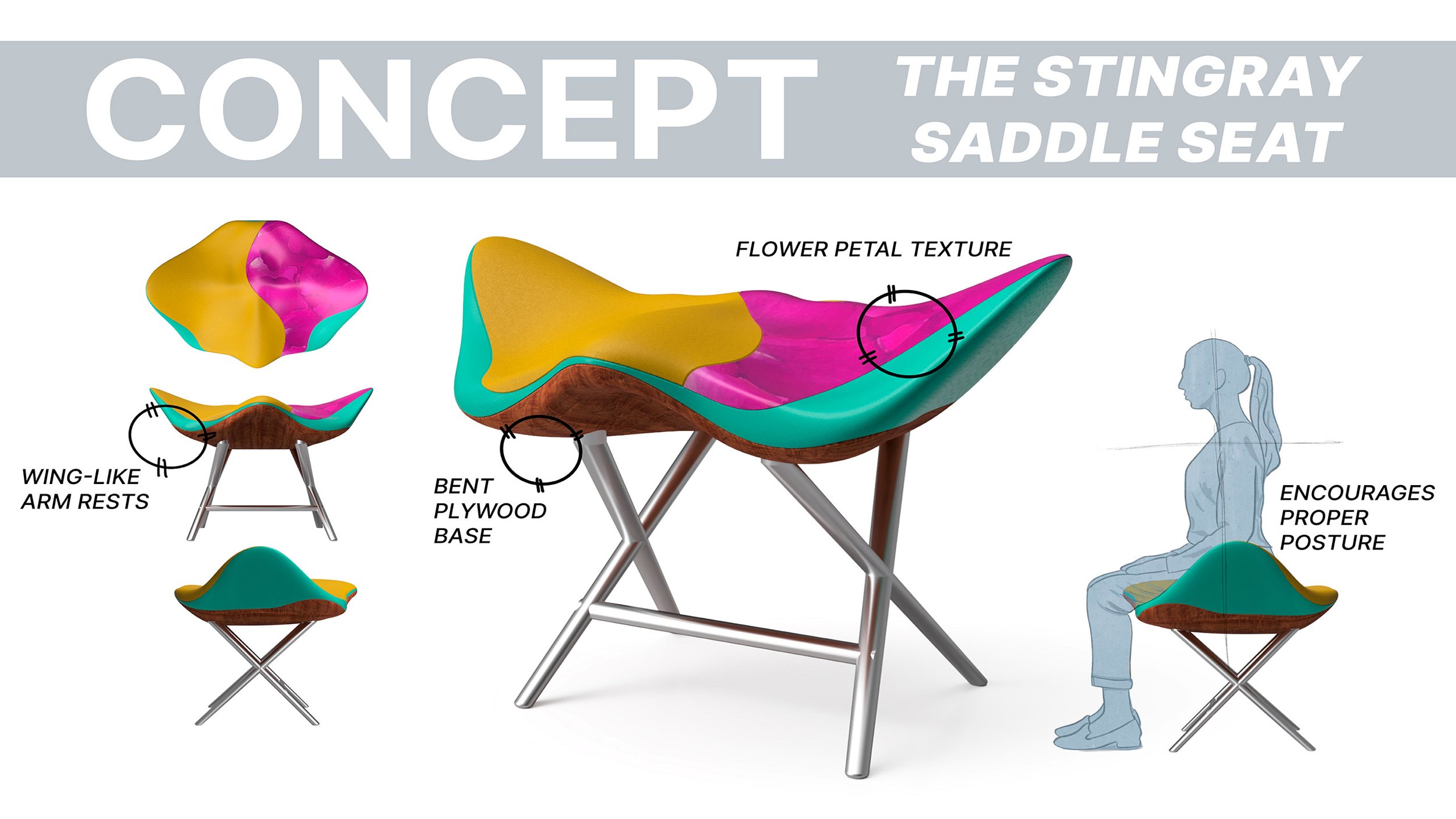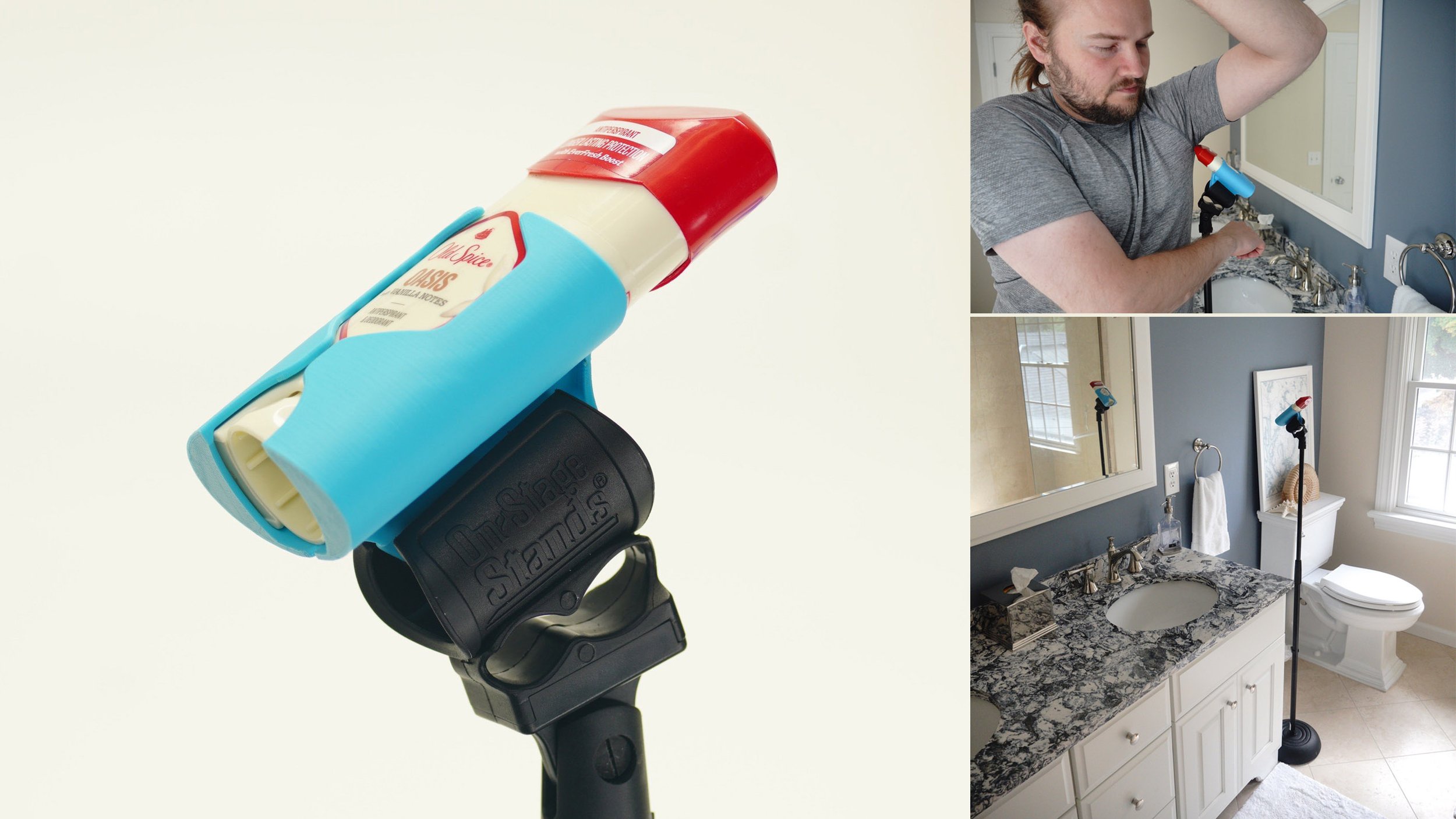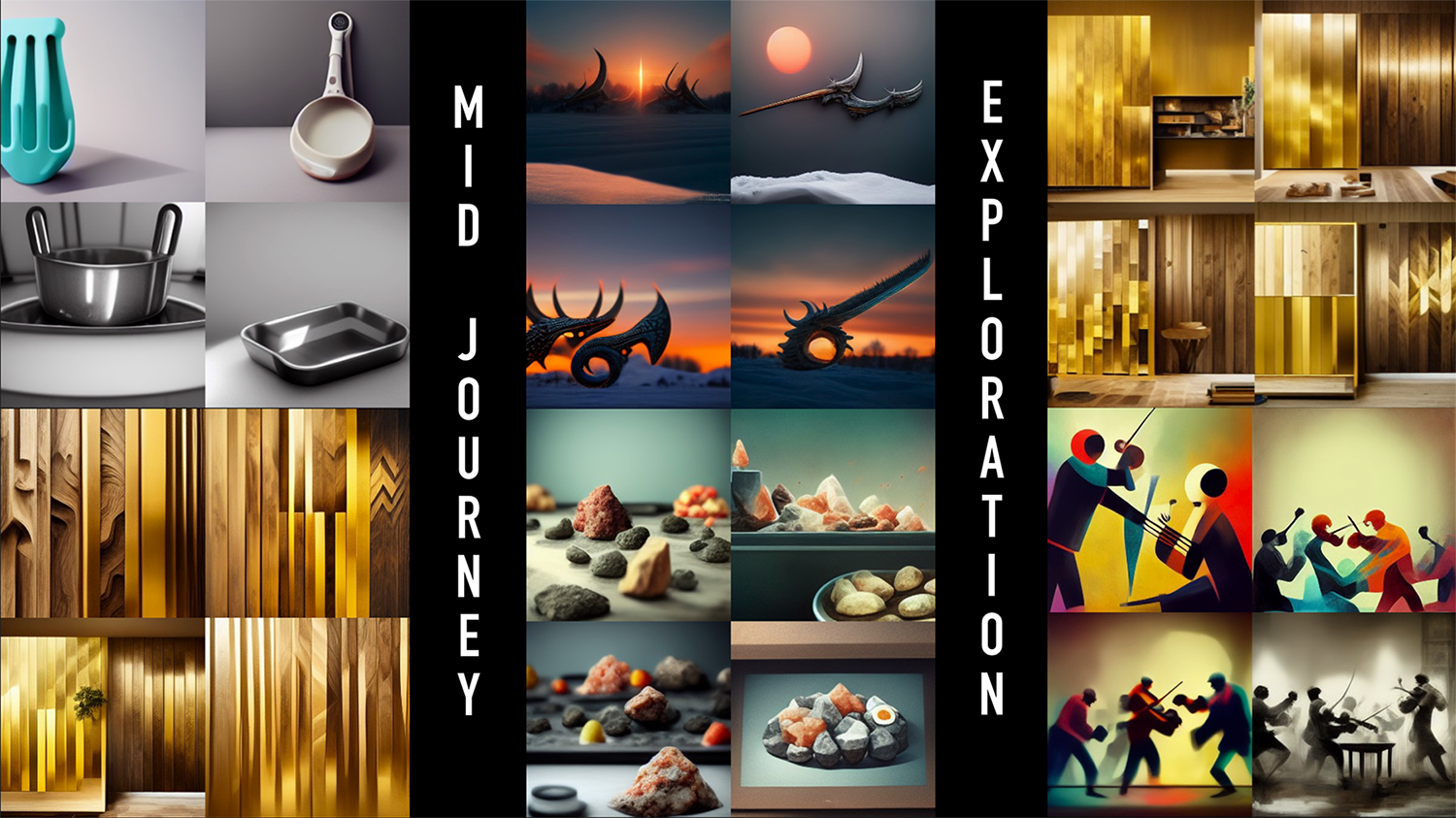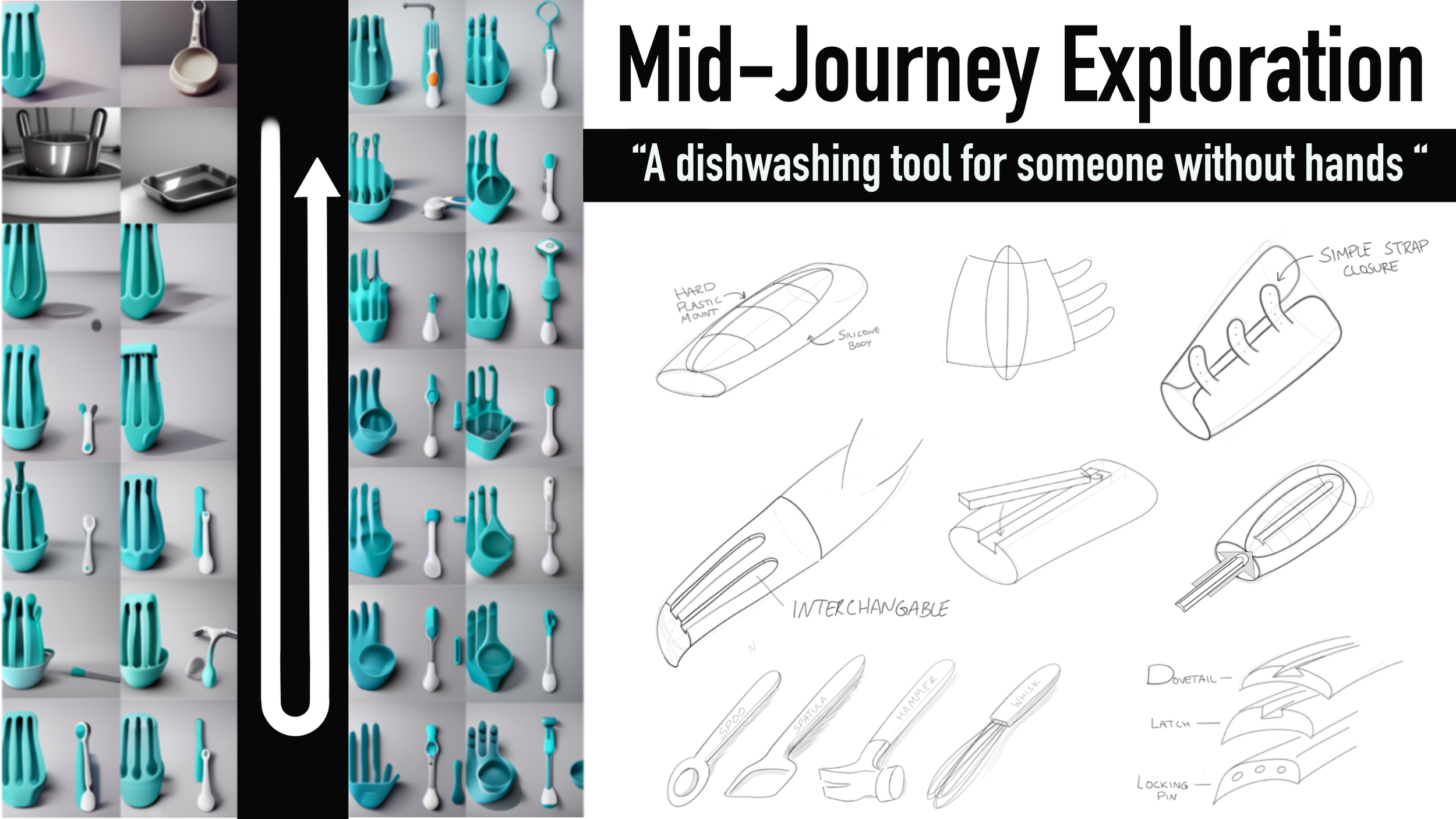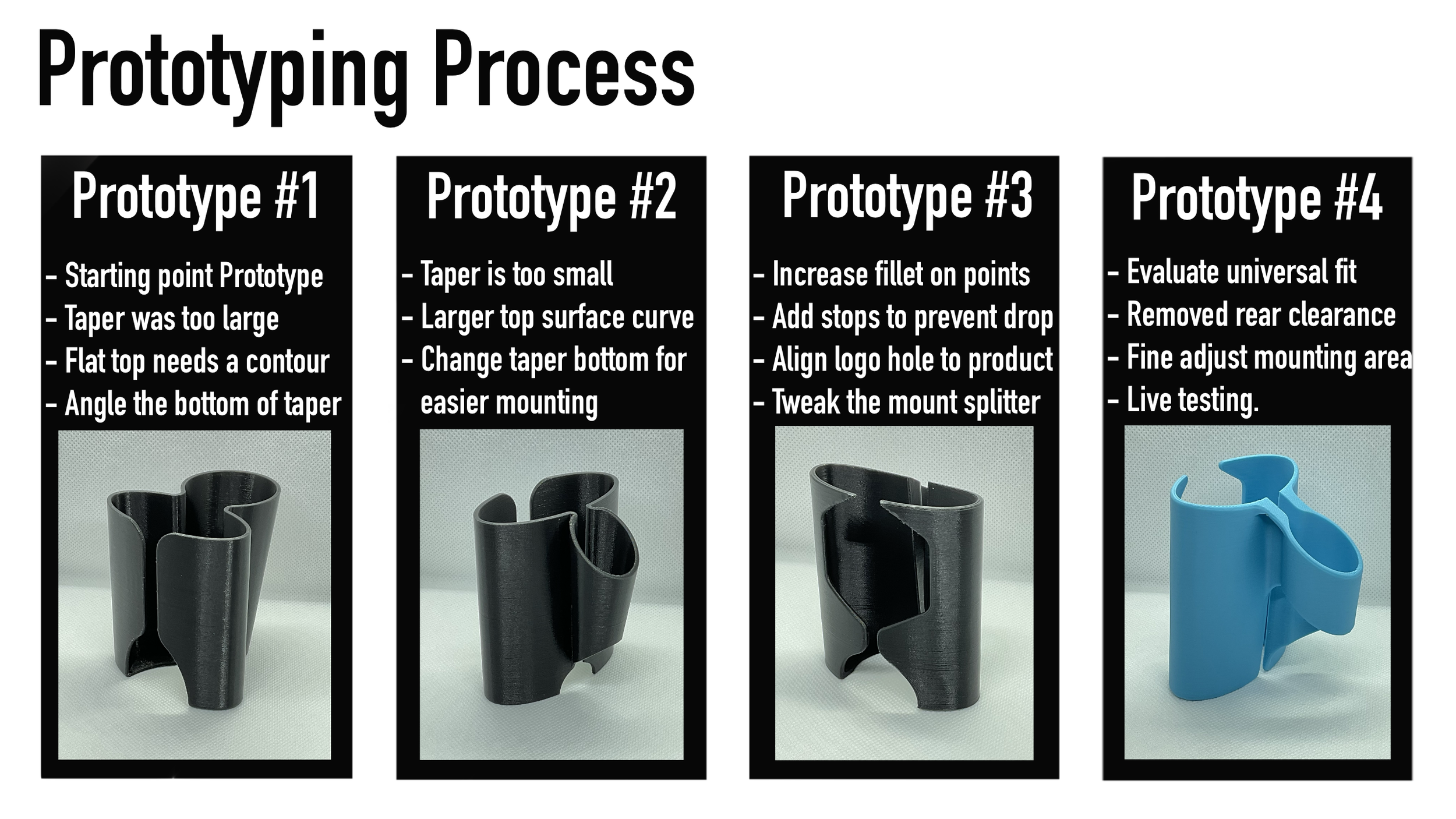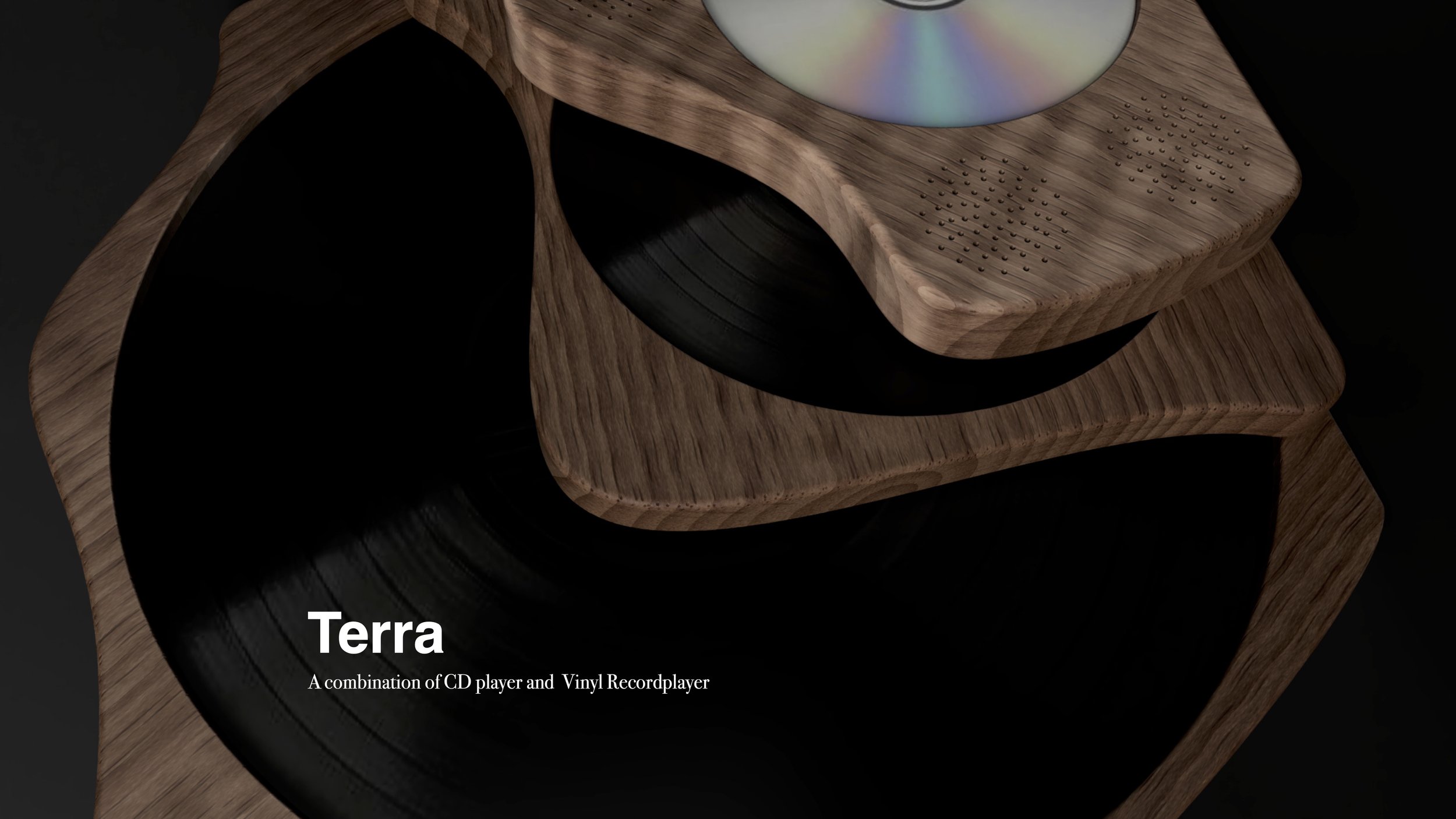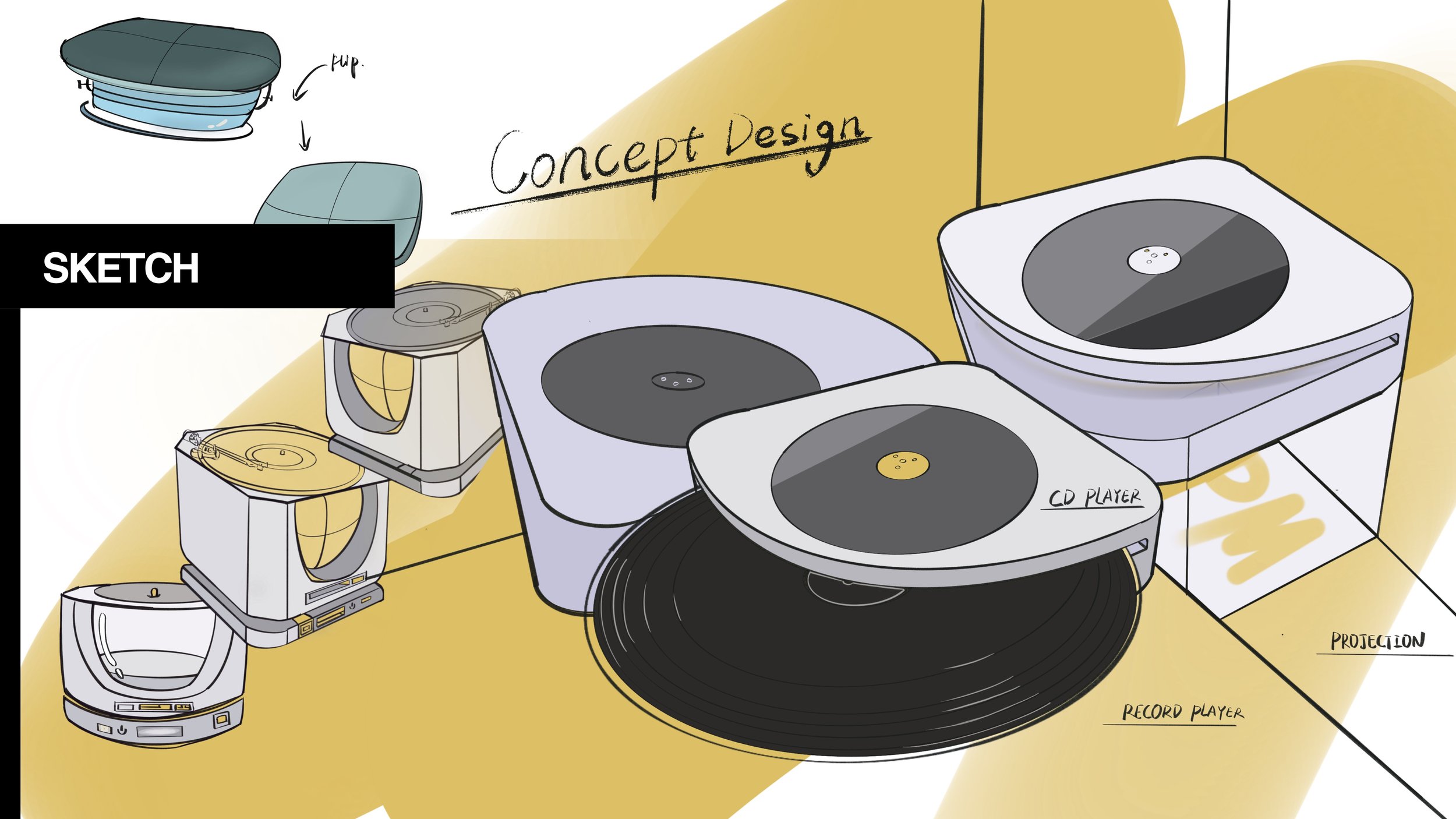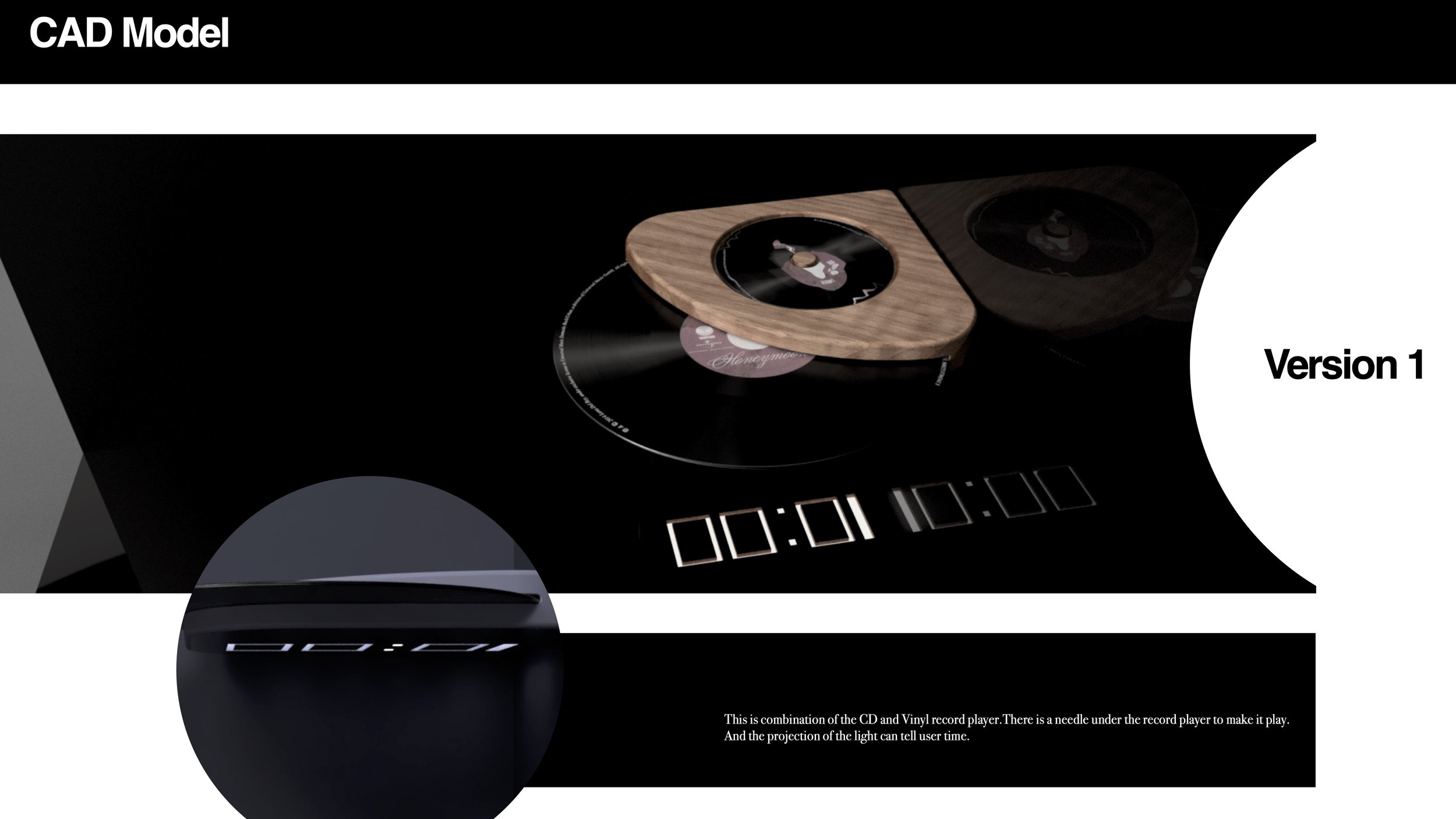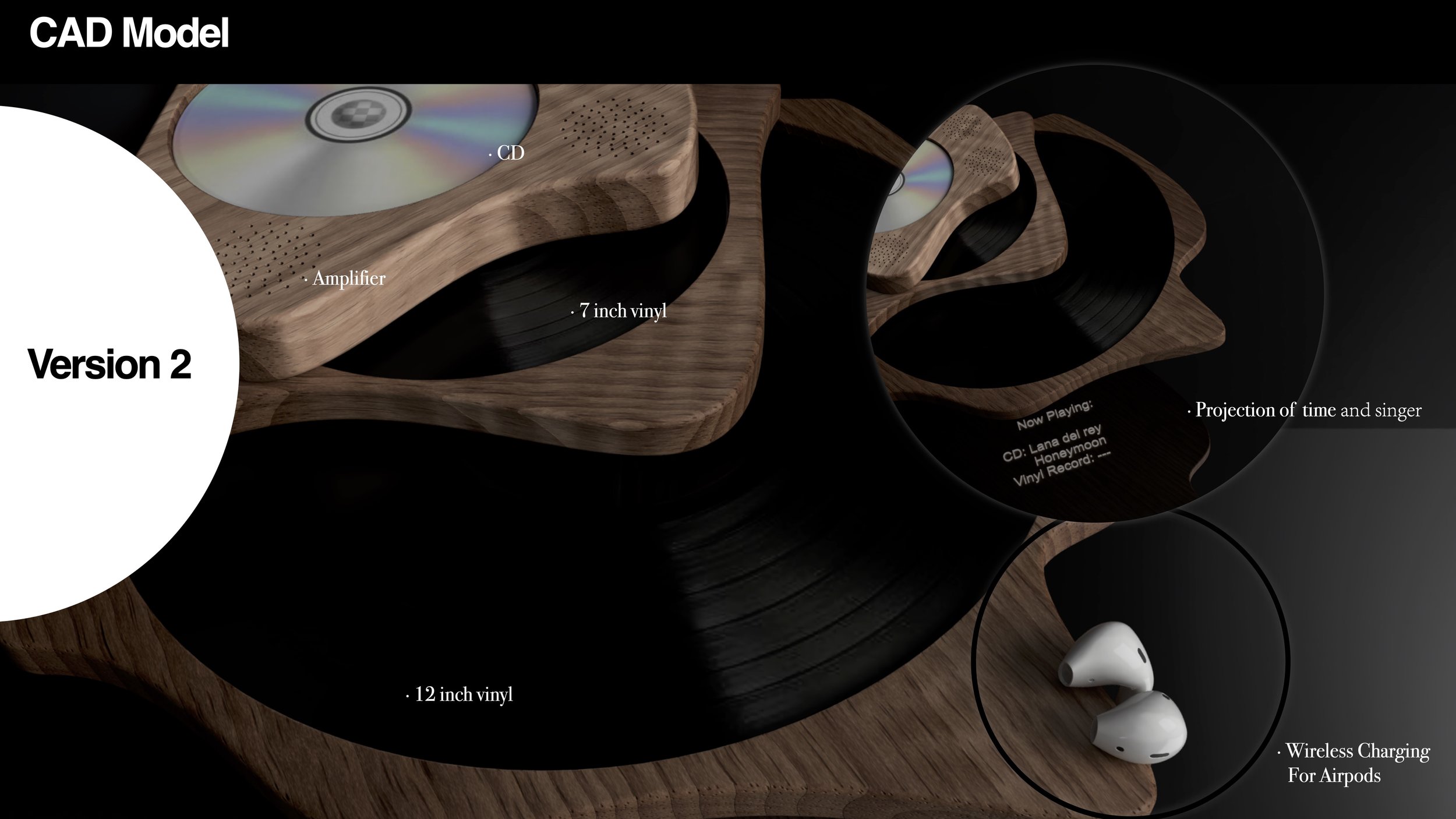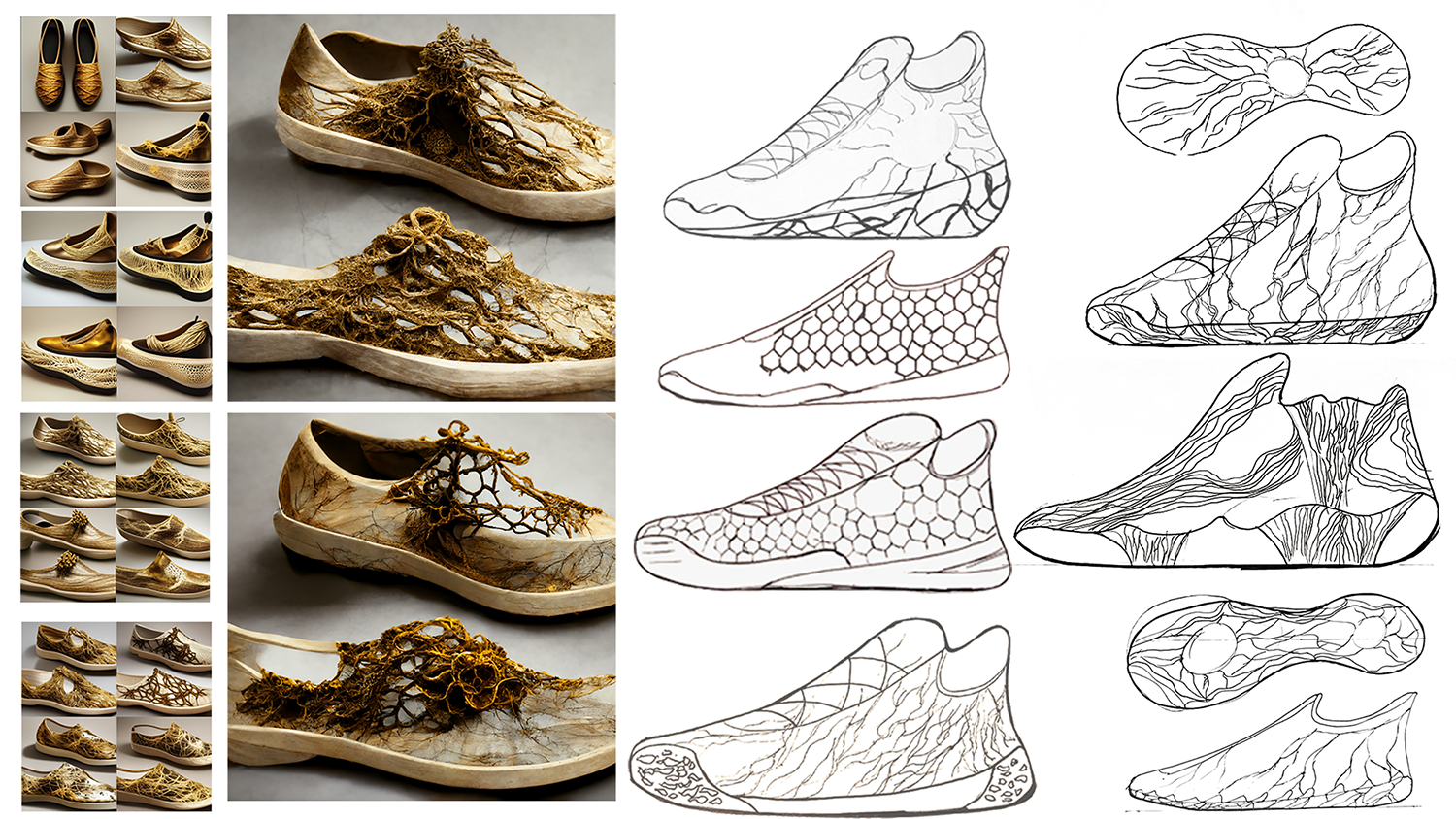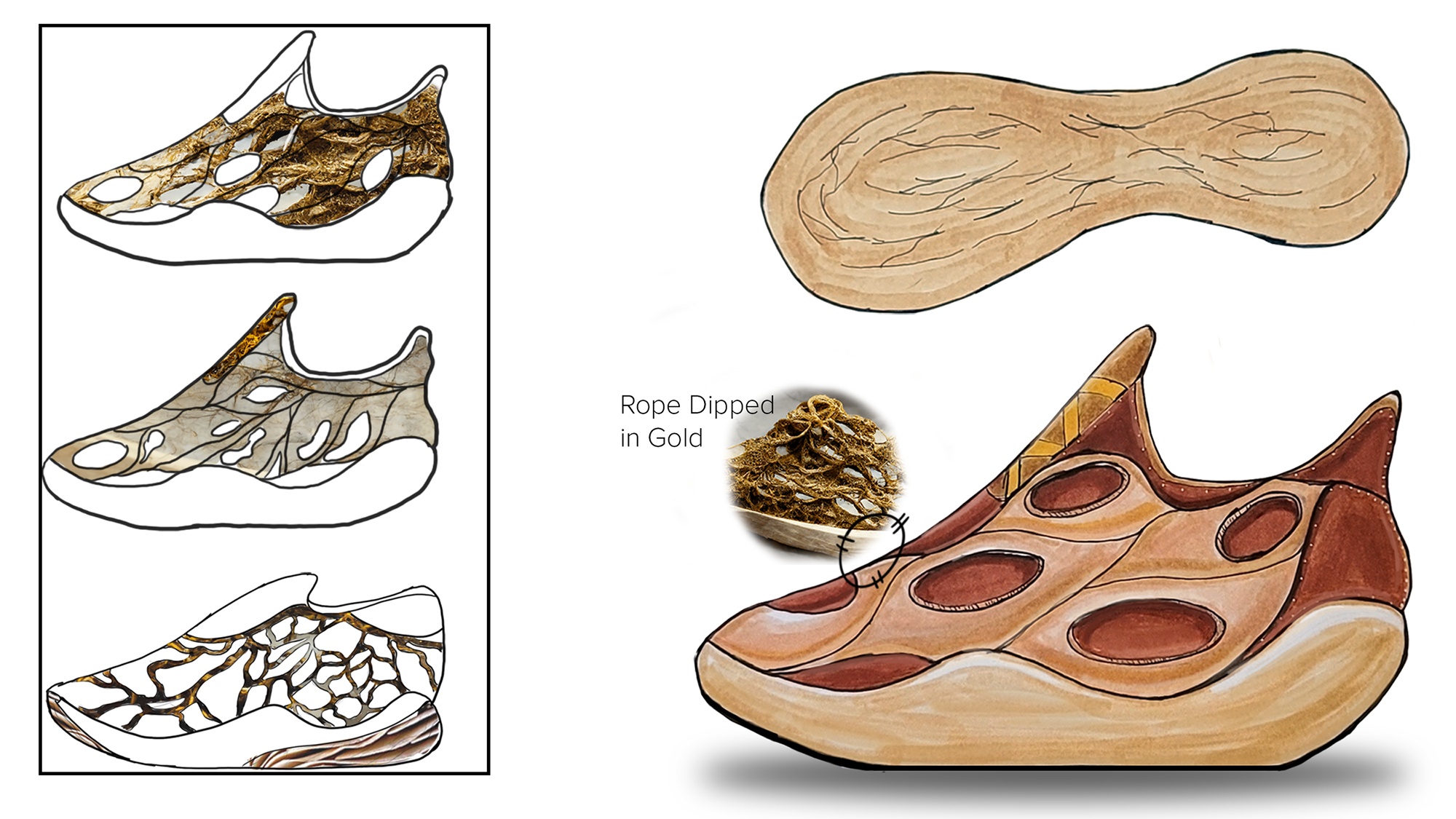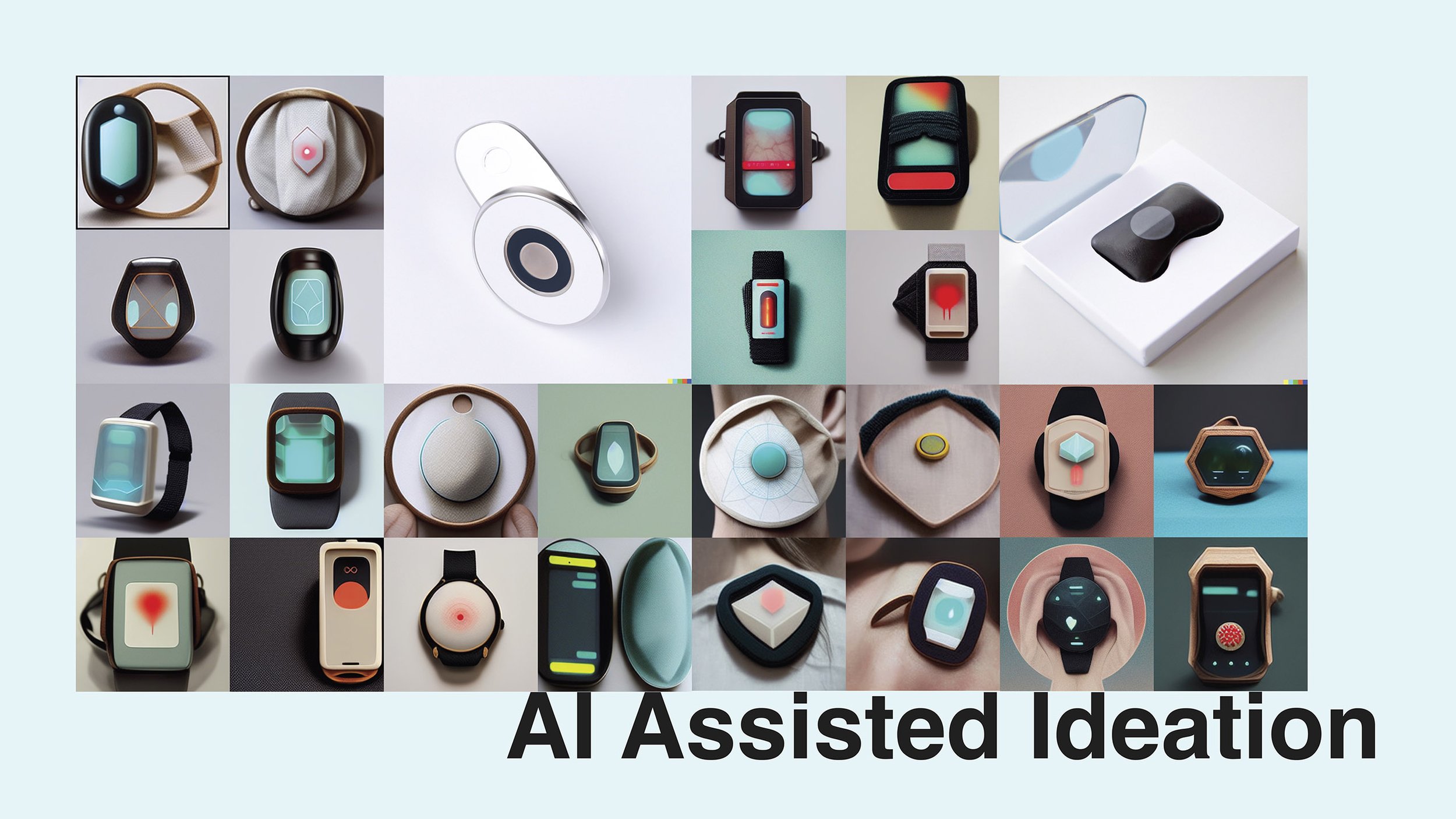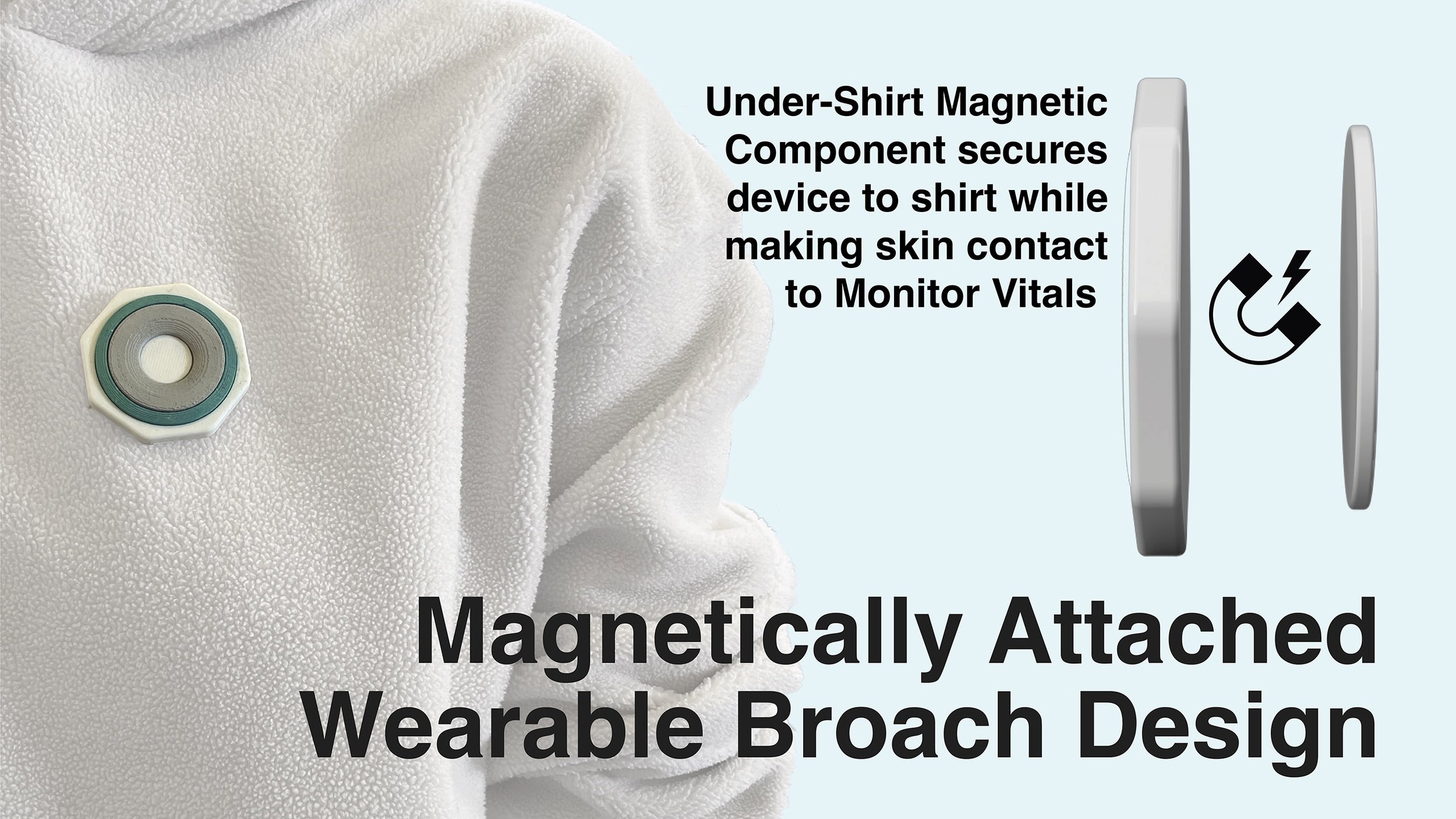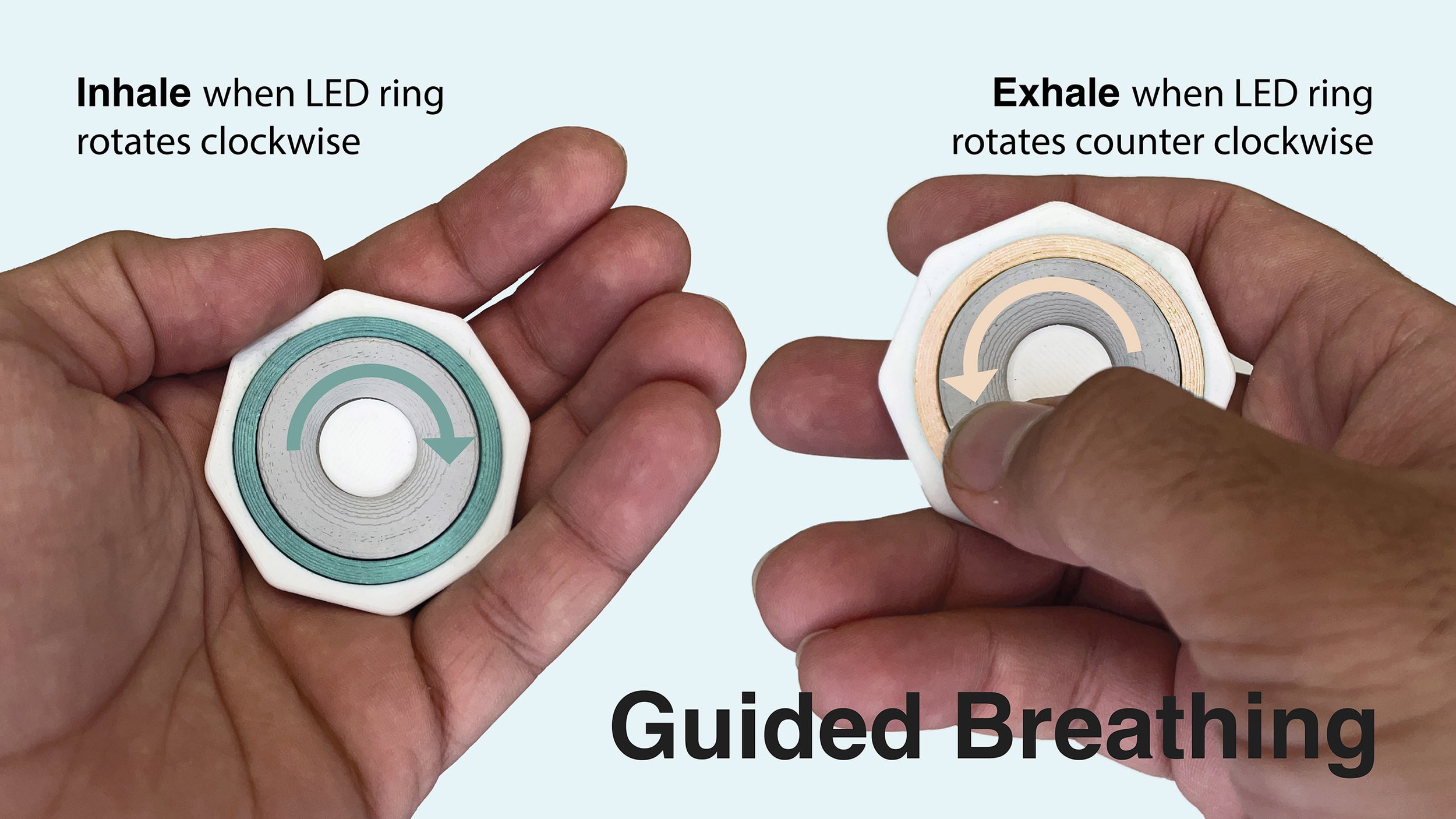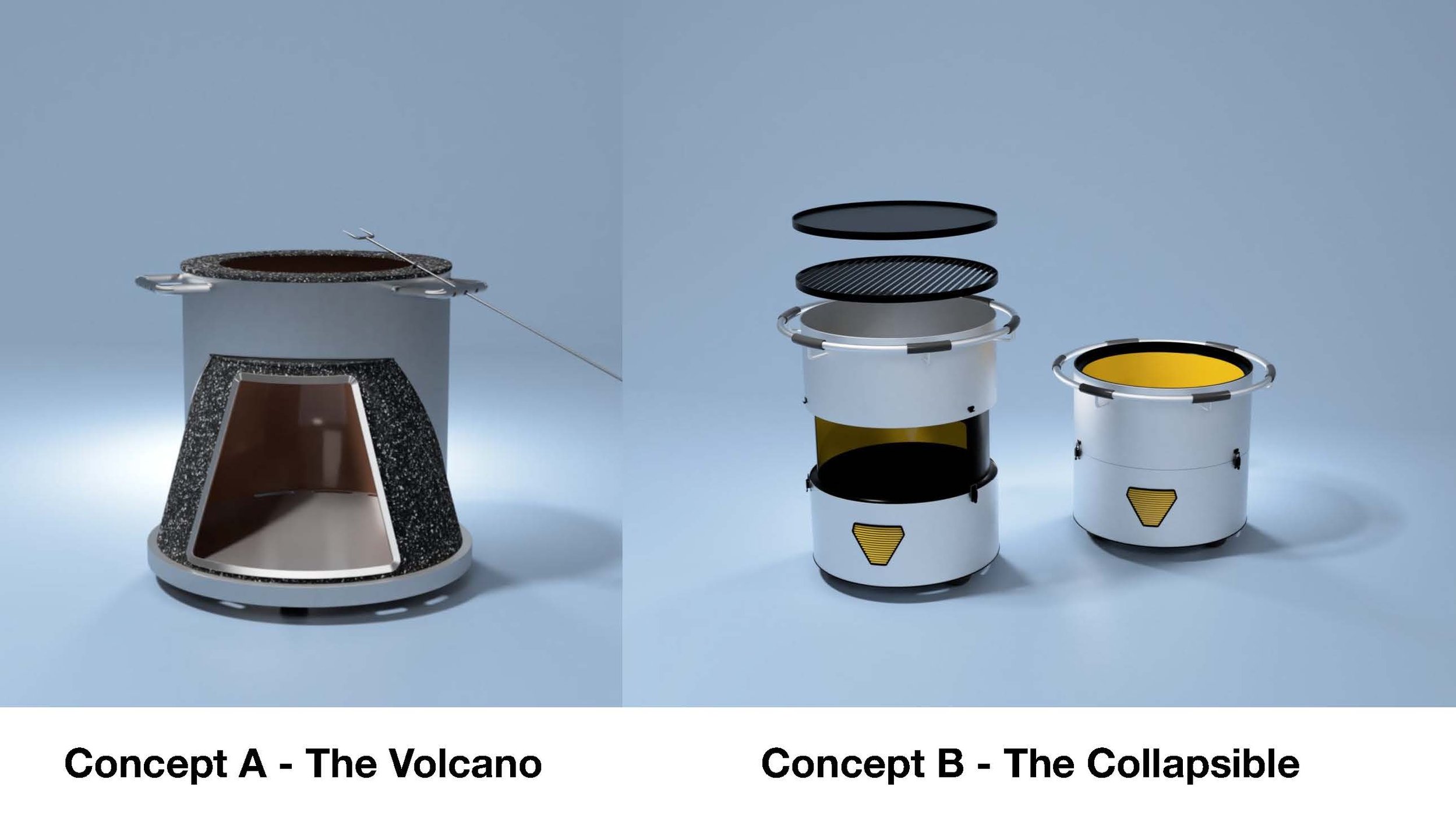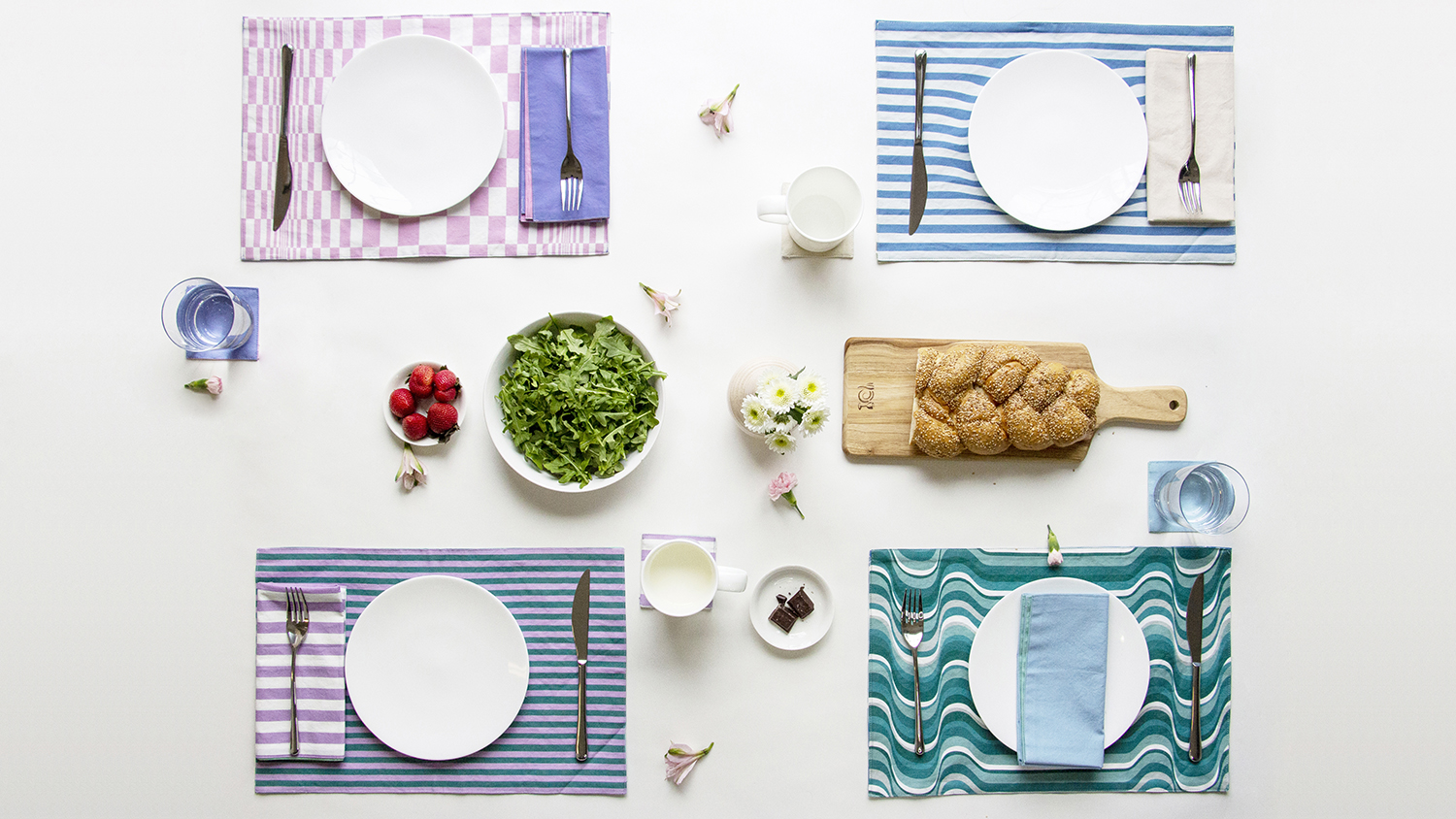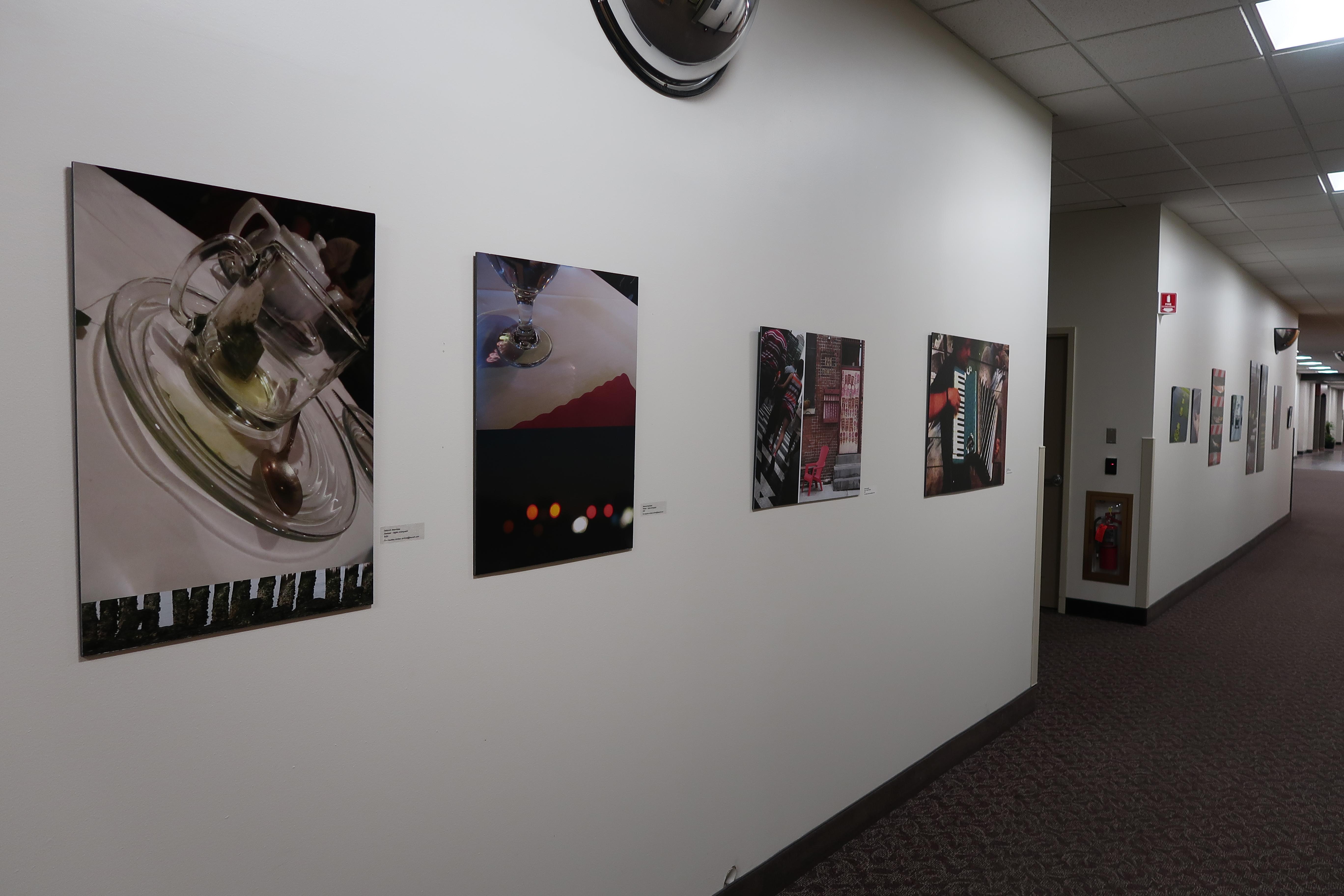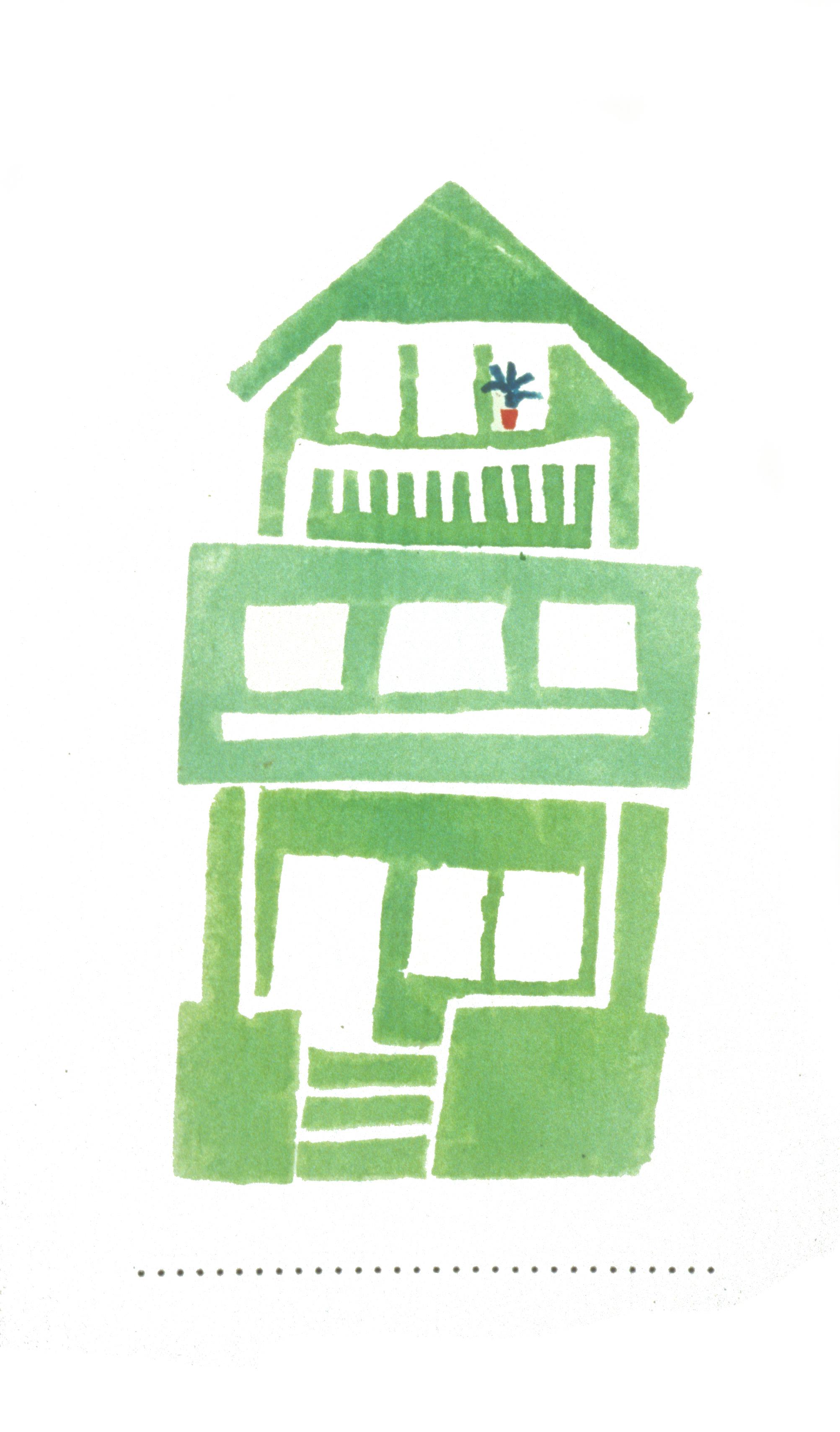Artificial Intelligence in Design

RIT industrial design MFA students, under the guidance of Assistant Professor Juan Noguera, investigated the role artificial intelligence (AI) can play in improving the design process.
For an assignment, the designers were tasked with incorporating AI as one element of their workflow. The technology was used to complement, not replace, core industrial design skills such as sketching, model-making, computer-aided design (CAD) and rendering. The results, Noguera said, reinforced his belief in AI-based tools serving a meaningful purpose in augmenting and accelerating the creative process.
The designs were showcased at the 2022 AI@RIT Summit.
“In the classroom amazing conversations were sparked, about authorship, ethics and the evolution of our design discipline — some students seeing the parallels with the introduction of CAD or the internet,” Noguera said. “Some of these designers used AI-generated images as a form-finding tool that accelerated or augmented their existing process, and others saw the AI take them in unexpected directions, with very rich results. The variety of products designed shows us the potential of using these tools in a variety of industries.”
Learn more about how Noguera and the students used artificial intelligence in design and their reflections below.
Juan Noguera, assistant professor
"Shown below is a simple in-class demo I showed my students. I prompted OpenAI’s Dall-E for images of “Cylinders Embracing Spheres” and threw in words like “Ceramic”, “Raku” and “Vessel.” What I got back was a set of fascinating organic forms (some better than others) that I admit I would not have landed on on my own (I gravitate toward more angular, simple form when sketching).
What came next (for me) was distilling those ideas into a product concept. I noticed these forms naturally generated a number of open cavities/levels, and thought that those characteristics may be well suited for an object like an organizer/container of small items. I quickly took some of the best or most interesting bits and forms and in my sketchbook, created a few desk organizer ideas. From here, I transferred these ideas to a simple CAD model in Autodesk Fusion360. In my process, I used AI to convert a very abstract idea into form inspiration. But my students all had different ideas of where AI may fit in their own personal workflow.
After this experience, I remain hopeful that AI-based tools will be a welcome addition to the tool kit of designers across many disciplines, and rather than replacing or diluting the skills or desirability of the designer, will augment and accelerate our creative process.
Juan Noguera
Juan Noguera
Juan Noguera
Shen Liu - Balance Chair for Kids
“I believe that using AI is a perfect way to improve today's design thinking. I will explain the reasoning by introducing this project. At the beginning of the design, I hoped to design a furniture product with fruit characteristics. Here was my initial prompt: “Furniture design, fruit, minimalism, product design.”
A chair shaped like a potato chip caught my attention. So I asked AI for help for the second time: “A minimalist chair with the product semantics of fruit.” Compared with the first time, this search was a complete sentence. AI combined the chair and a cushion that looks like bread, very interesting. After that, I combined the results of two AI images to find potential users, and explored more possibilities of chairs in one in-depth sketch session.
Finally, the biggest difference between this project and my past work is that it seems to be ‘adding.’ This is an experience I've never had before. According to the user-centric design principles, who and why are the first conditions I defined. At this stage, we need to clarify many design expectations, such as use, product life cycle, etc. In this project, I think subjective choice and randomness account for a very large proportion. These sentences are the main drivers of the project, including:
"Ah, I like the surface that looks like a potato chip."
"This picture looks like a vaulting box. I think of it as a children's toy."
"Does this toy have more playability?"
"Can it get more people involved?"
“Can it grow up with children?”
It seems that these sentences help us obtain the design requirements step by step, but these requirements come from the designer's own experience, and AI just provided a picture.
Shen Liu
Jacquelin Qiu - Presentation Clicker
“I first thought about materials and textures which may help relieve stress. Then I tried to type in some words about context like “wearable device,” “speaker,” or “table.” I was also interested in fancy combinations to help me start my ideation process, so I typed in “fancy,” “interesting,” and even some culture-related words. Overall, the whole process of AI image generation is like a combination of discussing and brainstorming with someone else, even though it is only you sitting in front of a screen.
According to the context of people living in the stressful world, it leads me to think about aroma, humidifiers, and even ends up with the presenter clicker. Because wood always has some interesting fragrance in my personal aspect, it leads me to think about aroma, which may help provide the fragrance for people to feel comfortable and relaxed. Considering the stone as a mountain, the humidifier seems to have strong materials combined with soft ‘clouds.’
After my ideation, I selected the fanciest concept from all of the ideas in the sketches and started my prototyping. Then, I started with the CAD model and printed it out to test whether it worked or not. The process of generation and ideation gives me an image of a future with AI in every corner of this world. What if it produces a sheet of music that may heal people’s mental illnesses? Can it make robots have the proper conduct to be a companion to a child? Can it have new ideas for an advertising plan for the sales manager? Can it be not only a 2D artist but also a 3D art sculptor? I think there will be tremendous and exciting innovations with AI in the future to meet every person's needs.
Jacquelin Qiu
Jacquelin Qiu
Jacquelin Qiu
Jacquelin Qiu
Jacquelin Qiu
Jayden Zhou - Violin
“The AI tool I use is Midjourney, which quickly performs random combinations based on the keywords I set. I picked the direction I desired within the generated results to go deeper. Research is essential to design. I do a lot of research before designing, like the history of the object I am working on and what kind of work other designers have done. This search is a learning process for designers, and AI can help them learn more quickly.
My prompt was ‘futuristic sci-fi stringed instruments.’ I expected the AI's perspective to be unique and full of randomness. Four images are initially generated, the first is a light strip that spans across the whole image, and the other three are guitars in various forms. Eventually, I found a tiny incomplete instrument in the corner of the first blurred image. This instrument was a bit unreasonable in structure, but its shape was never seen before. One of the advantages of the blurred image is that it gives the designer enough space to imagine and rationalize the unreasonable structure. I sketched the stringed instrument according to my imagination, and its layout and colors are more like an acoustic violin. During the ideation process, I kept the characteristic contour lines as the outline of the electric violin.
In the future, It may become common for people to use AI as a tool for their daily designs. When struggling with inspiration, I could use AI to help me overcome obstacles. For now, the chances of success are low, but it’s worth a shot.”
Jayden Zhou
Jayden Zhou
Jayden Zhou
Jayden Zhou
Ariella Knight - Stingray Saddle Seat
“I did not set out to design a chair. I started by thinking about solar panels on farmland. When Midjourney spit out a steampunk, veiny system of jellyfish in the sky after I entered the prompt, “jellyfish/solar panel/farmland/4k,” my interests wandered and I thought more about what a mashup of contrasting prompts could generate. This can happen a lot in design, a squiggly journey that shuffles us from where we started to where we end. Professor Lorraine Justice calls this part of the process the ‘fuzzy front end.’
The simple, fast, AI-driven accessible exploration of divergent prompts was what became immediately captivating to me in this project. As a mother in grad school I like to include my daughters when I can, and so we came up with some prompts together, “soccer ball, fish, diaper,” “ice cream, laundry, sunshine, wet,” and "stingray, bed, velvet.” I liked what was generated as a result of that last one.
The notion of comfort led me to posture which made me think of saddles and ergonomic chairs. When I presented a concept sketch in class Juan Noguera supported my direction and referenced the Krabat Wheelchair. So I continued on, now designing a Stingray Saddle Chair– one that echoed some of the midcentury forms that I love, but could be comfortable, encourage good body alignment and even build strength over time (really not agricultural solar panels).
We look deeply at process and thinking in design, I feel myself really longing for insight into AI thinking. There are hints — artifacts of text or barcodes blurred out and dissolved into the landscape, but it’s not enough. How could this be remedied? A way to trace origins would be a great place to start. Maybe even access to a library of source material. Especially at a time when we are thinking more about appropriation and crediting Midjourney’s generations in the void feels like a move in the wrong direction. Some might argue that it is an equal playing field — new to everyone and with widespread availability, but I question if in the end it’s a sneakier form of erasure.”
Ariella Knight
Ariella Knight
Ariella Knight
Ariella Knight
Jos Mayo - Accessible Deodorant
“My prompt for this exploration was “A dishwashing tool for someone without hands. My grandfather was involved in a train accident that cut off his right arm above the elbow. He had a simple rubber arm as a result, commonly called a passive prosthetic. This got me thinking what could have been available to him had this happened today? My prompt was the result of that thinking and my first impression of my results was surprise because it generated objects with handles. I could have made a new prompt with “no handles” included but instead I requested multiple revisions based on the initial blue form to see what it would do. The results slowly created a more usable form that could be translated into a prototype or actionable form for development.
Some simple sketching and research into the real world of amputees revealed a glaring lack of options for hand amputees, especially bathroom aids. Many of the best institutions that outfit amputees with prosthetics advocate using microphone stands as the best commonly available option for mounting hygiene items for daily use. These solutions still often require amputees to rig their own setups while taking into consideration that they are potentially new to the world of living without a limb(s). After seeing pictures of a deodorant stick, electric shaver, toothbrushes, etc. all strapped to gooseneck microphone stands in a bathroom, I couldn’t ignore the glaring lack of attention that these individuals and their unique needs had acquired.
My final design was a simple clamp that utilizes a weighted microphone stand and a universal microphone attachment. It has a compliant mechanism built into its shape that acts as a clamp when pressed into the microphone attachment. The deodorant stick can be securely held and is easy to mount without much need of assistance. The intention of this design was to be able to insert deodorant and mount it to the stand without needing finger dexterity (no velcro or spring loaded clips). 3D printing emerged as an effective way to provide this solution to the community that needs it.
Ultimately, I didn’t use my original AI images or forms but they did provide the push to investigate a problem and find a solution that I wouldn’t have otherwise done. With some more refinement and control over the process that generates images, I could see this finding a permanent place in most creative processes.”
Jos Mayo
Jos Mayo
Jos Mayo
Jos Mayo
Jos Mayo
Anqi Zhu - Terra Music Player
“My proposed problem was to design a CD player for the retro-futuristic music market. For my AI-assisted idea generation, I prompted the AI for “futuristic blender render of CD player, 8k, emotional” and the images produced were amazing. These music players were a fusion between a disco dance hall and a modern product. I didn’t see actual CDs in the images, only glass boxes but I noticed the appearance of vinyl record textures in the top portion, which led me to the thought of combining both a CD player and a vinyl record player in the same form factor.
The beautiful lighting of the AI-generated images also gave me the idea to combine light projection into the product and design thinking. Throughout this process, I asked myself, ‘How does it fit within my industrial design process?’ Before this close encounter with AI technology, I had only read about it on the news. Only a couple of years ago, the state of the art for AI was clumsy face-swapping and funny effects on social media selfies. However, these AI bots have gone from clumsy and ridiculous, to sophisticated and scary, in only a short period of time.
Using an AI system like Midjourney has me a little worried. The images are fantastic, they can have a touch of genius, and are generally very creative and unusual. Most people think AI is very distant from them, but these systems are becoming usable tools. As long as we are transparent in their use and existence, especially in our design process, things will be well.”
Anqi Zhu
Anqi Zhu
Anqi Zhu
Anqi Zhu
Anqi Zhu
Tayo Oke - Mycelium Shoes
“I prompted the AI image generator Midjourney to show me how ‘mycelium slip on shoes with brown rope shoelaces dipped in gold’ would render. Midjourney gave me what I would call the ‘perfect’ render of a slip-on shoe made out of mycelium. This is where I became stuck in my design process, because the AI answered my question perfectly. Studying characteristics of real mycelium while looking through the AI renders helped influence my creativity and thus I was able to blend nature and machine to create my rough concepts. Discovering more fabrics and garments made of out mycelium made me confident that this process was practical and could be made as a working prototype.
Overall, this whole experiment was very eye-opening to how not to use AI in a design process. I think Midjourney (more than Open AI’s DALL-E) can be an excellent tool to use in the design process because it develops pictures in an artistic format. The way I used this program might solidify the skeptics who believe that Midjourney and AI ‘are coming to take over our jobs.’ However, I would argue that this proves how new and imperfect these tools can be used in creative spaces. In my process I immediately went back to draw inspiration from nature to strengthen my sketching and design process because that was the only way I saw myself making progress in this experiment.”
Tayo Oke
Tayo Oke
Tayo Oke
Zaheer Shujayee - Health Monitor
“Anxiety disorders are being more and more widely diagnosed, with centering exercises being used to manage anxiety. I want to design products that promote well-being and mental health. With my anxiety management wearable device, I aimed to create a product that will detect a heart rate congruent with a panic attack, and prompt the user into a guided breathing and centering exercise. This guided exercise uses a circular light to prompt whether to inhale, hold, or exhale.
I wanted to see what devices specifically catered to anxiety disorders looked like according to A.I. and received some interesting results. A hurdle I encountered was that this space is largely dominated by wrist watch devices, which was a form factor I was not interested in because many users would already be wearing a watch or watch-like device in their daily lives. Of course, I needed to add other adjectives into the image generator such as ‘sleek’ and ‘modern.’ After refining my prompts I received many interesting-looking products that worked to guide my design thinking as well as giving me a bank of influences to draw from.
“Artificial intelligence is very useful for creating a supply of inspirations to draw from, but it is in no way a tool that will replace designers. For myself, it was best used as a tool for getting the ideation process started; it was no replacement for ideating, sketching, and iterating. My expectation of the A.I.-assisted design process was that the A.I. would simply amalgamate many related products from the web of reference it had to draw from, and I feel as though that was what happened.”
Zaheer Shujayee
Zaheer Shujayee
Zaheer Shujayee
Zaheer Shujayee
Rob Deane - Camping Stove
“My primary focus design-wise is furniture and home goods, but for this project I decided to branch out a bit into camping gear. I was particularly excited to get started on this project. I had been playing with DALL-E Mini (Craiyon now) all summer and the idea of using more robust AI engines for design purposes was right up my alley. I jumped in with very product-focused prompts, referencing design motifs, eras, or movements, materials, and the desired product.
The prompt that gave me the most intriguing results was “cleverly designed aluminum mid-century modern camping stove.” I took that set of results and ran with them. I ran variations of the original results, variations of the prompt, on both DALL-E and Midjourney. I bounced images back and forth between the two systems and determined what parts of the process each were more suitable for. After generating several dozen images of what a camp stove might look like, I developed three widely diverging designs for wood- or charcoal-fueled outdoor stoves.
After being satisfied with the material I had gathered, I started to sketch, pulling forms and details from various images. The abstraction of the images was key to this process. Many features in the images had no obvious function, leaving plenty of room for my own interpretation. These bits were sort of creative sparks for me, seeds to let ideas grow from.”
Rob Deane
Rob Deane
Rob Deane
Rob Deane





